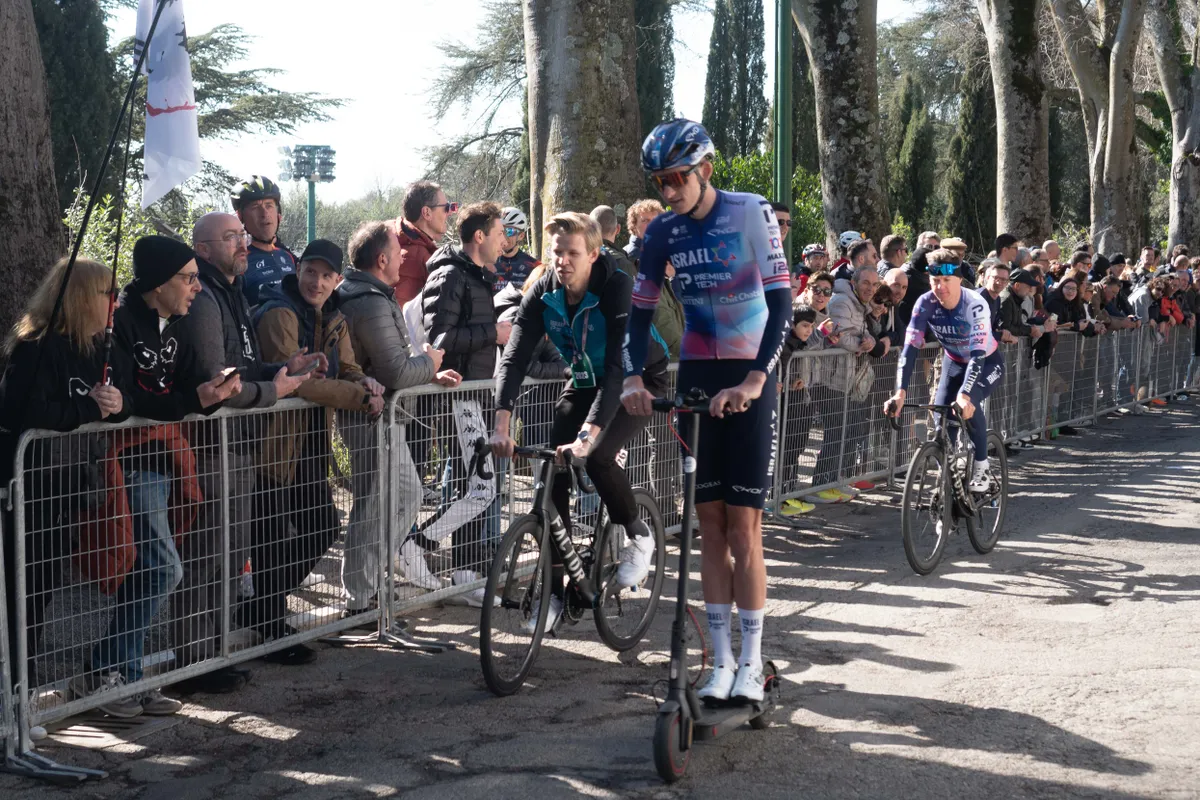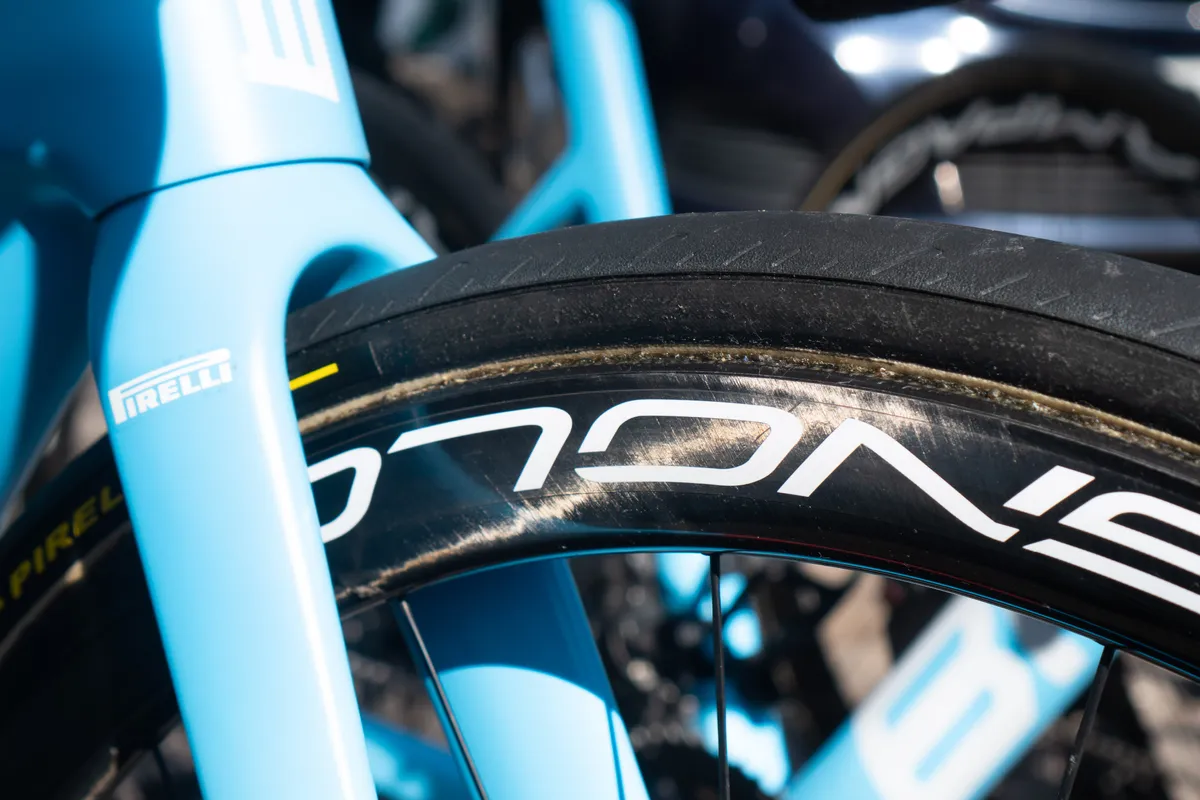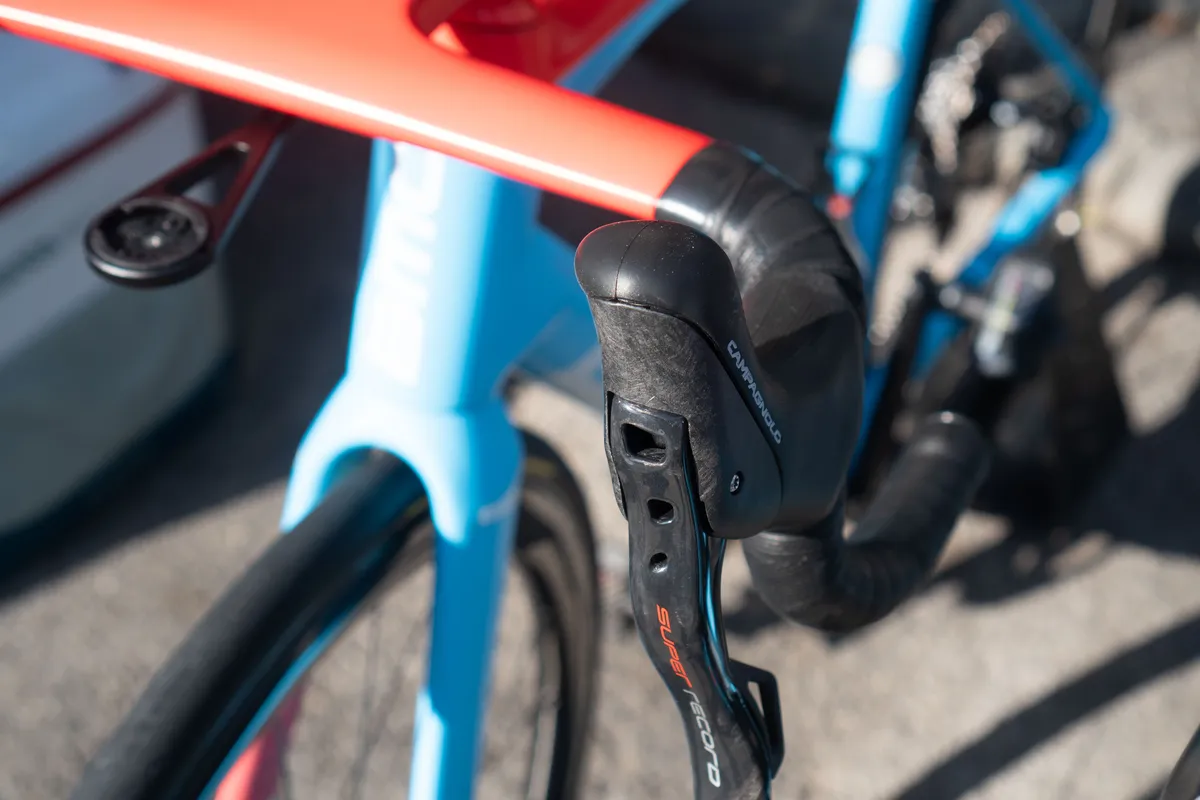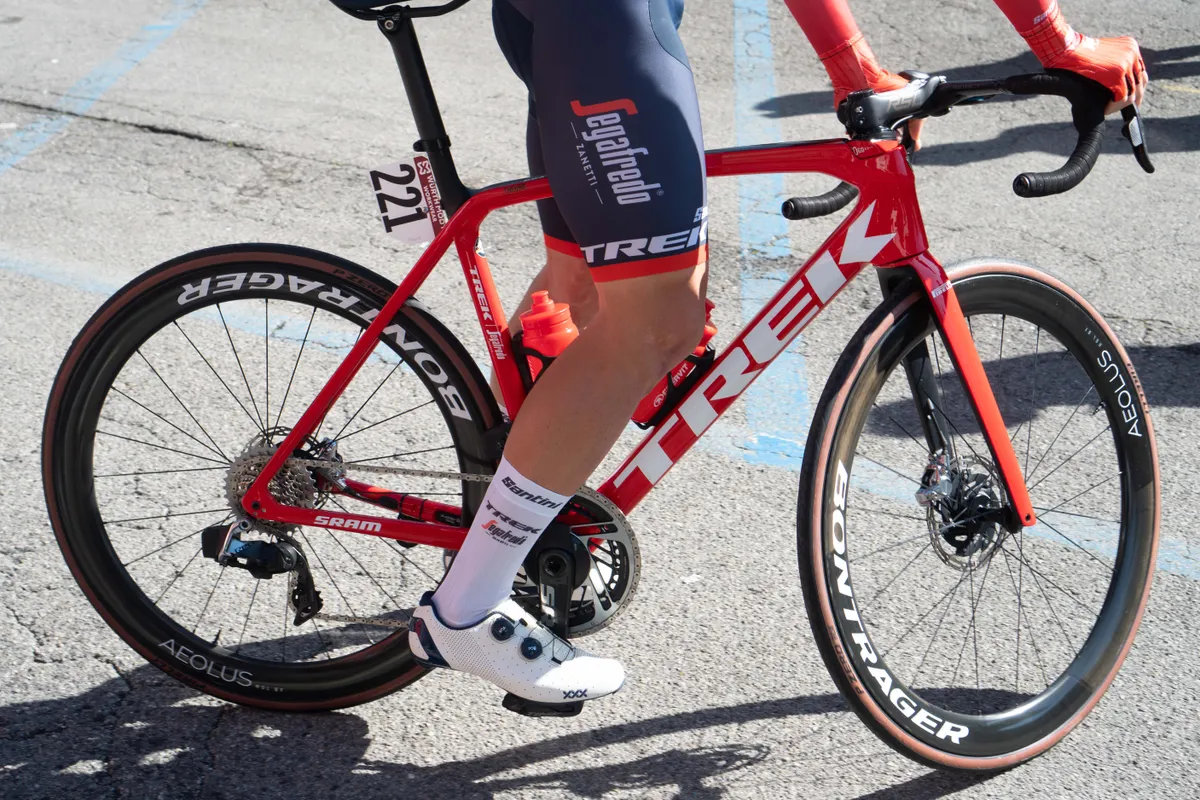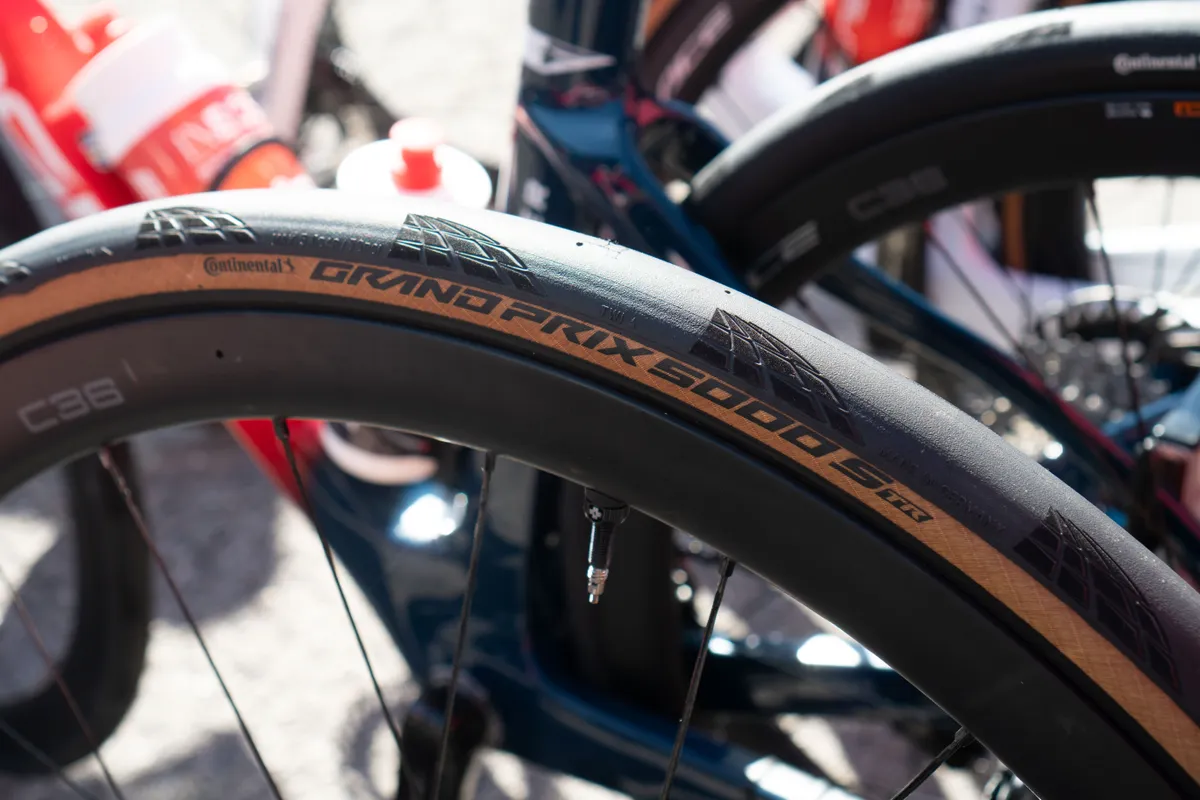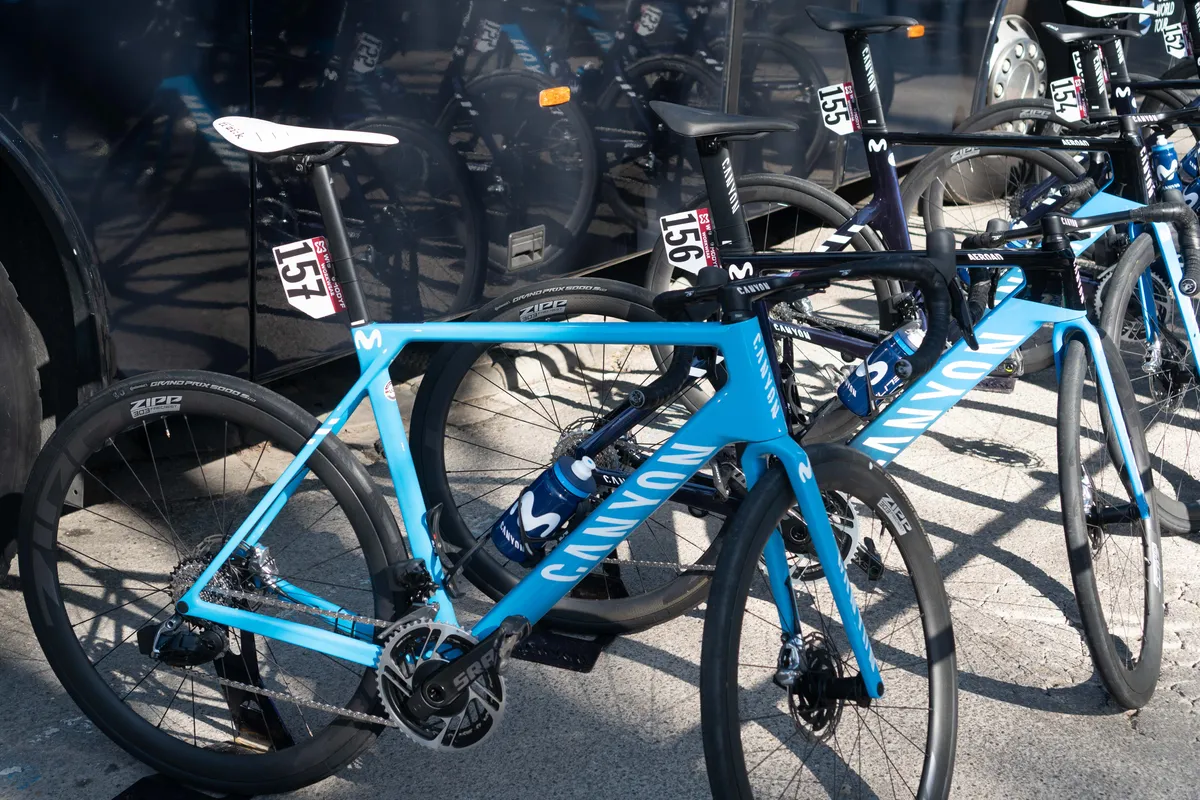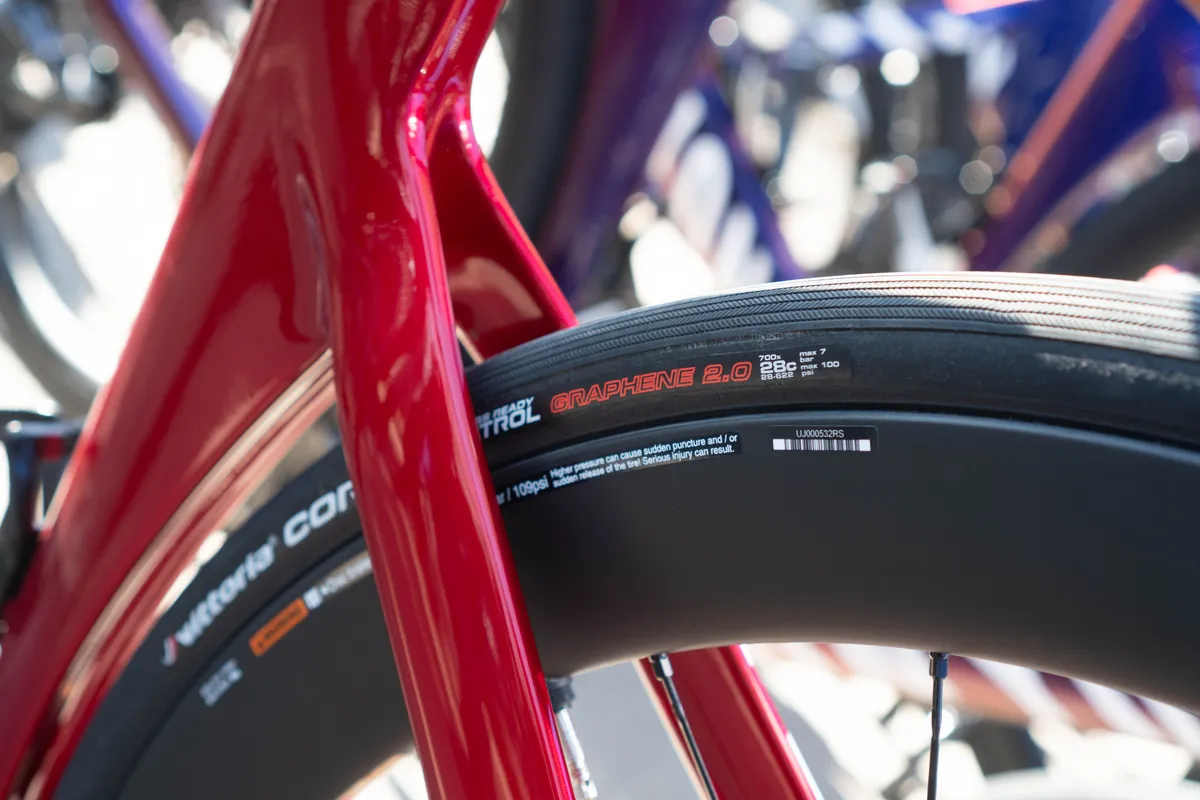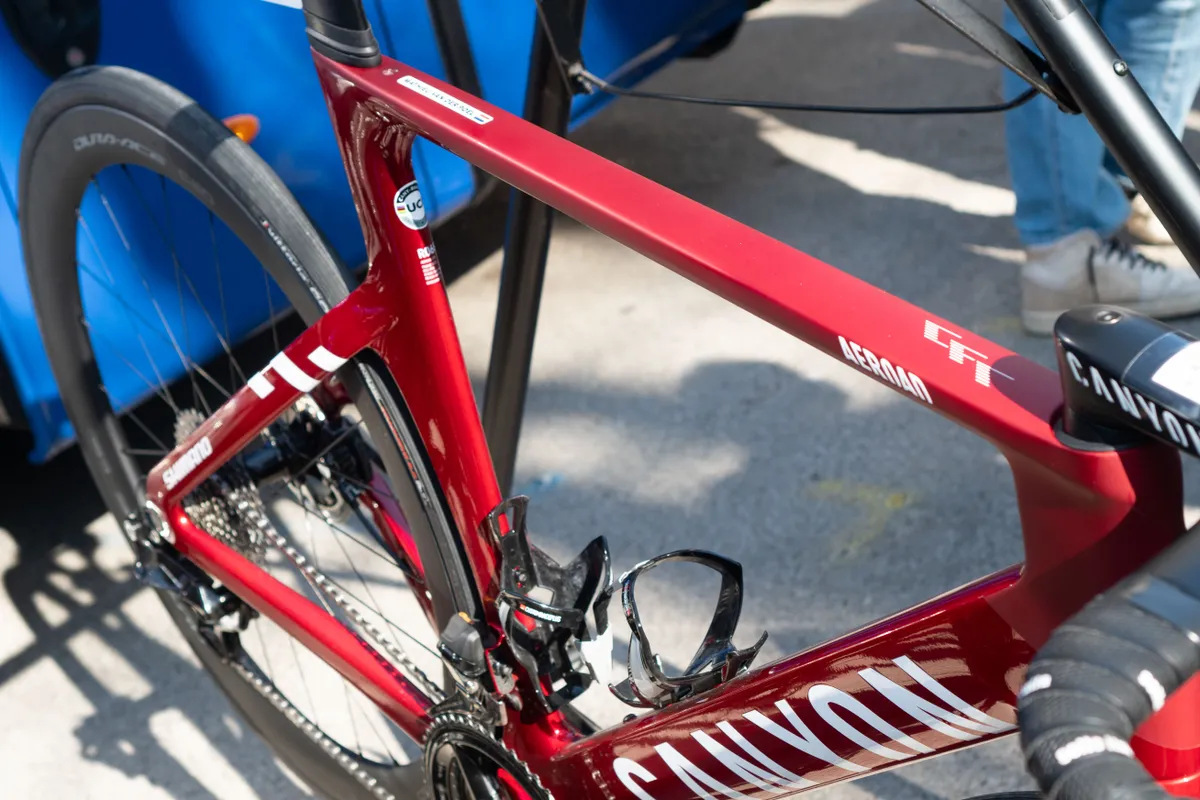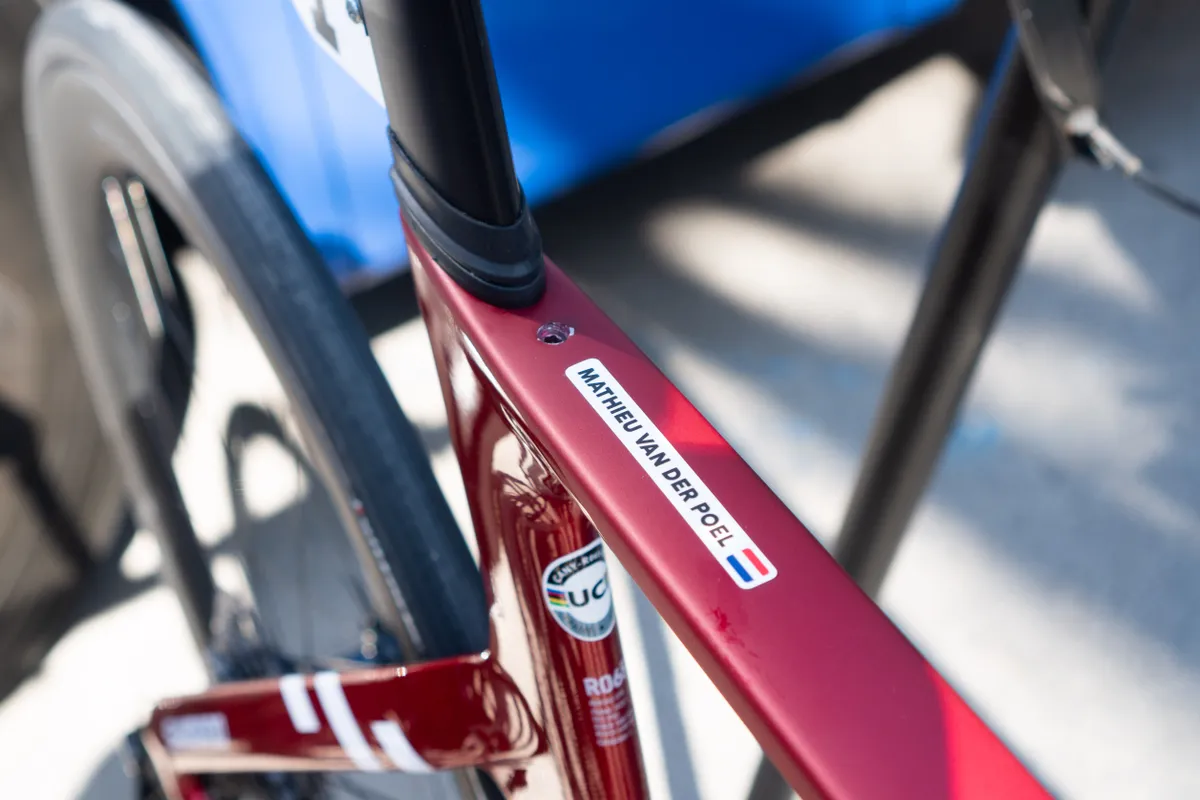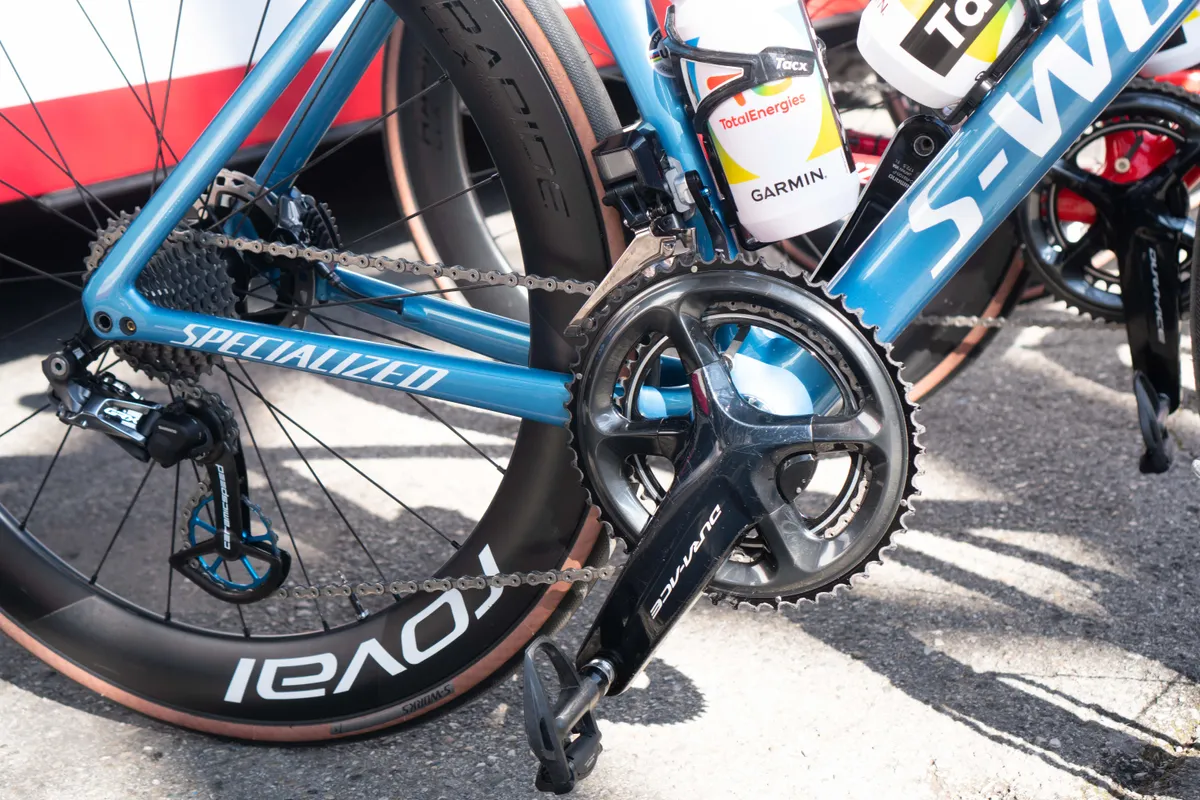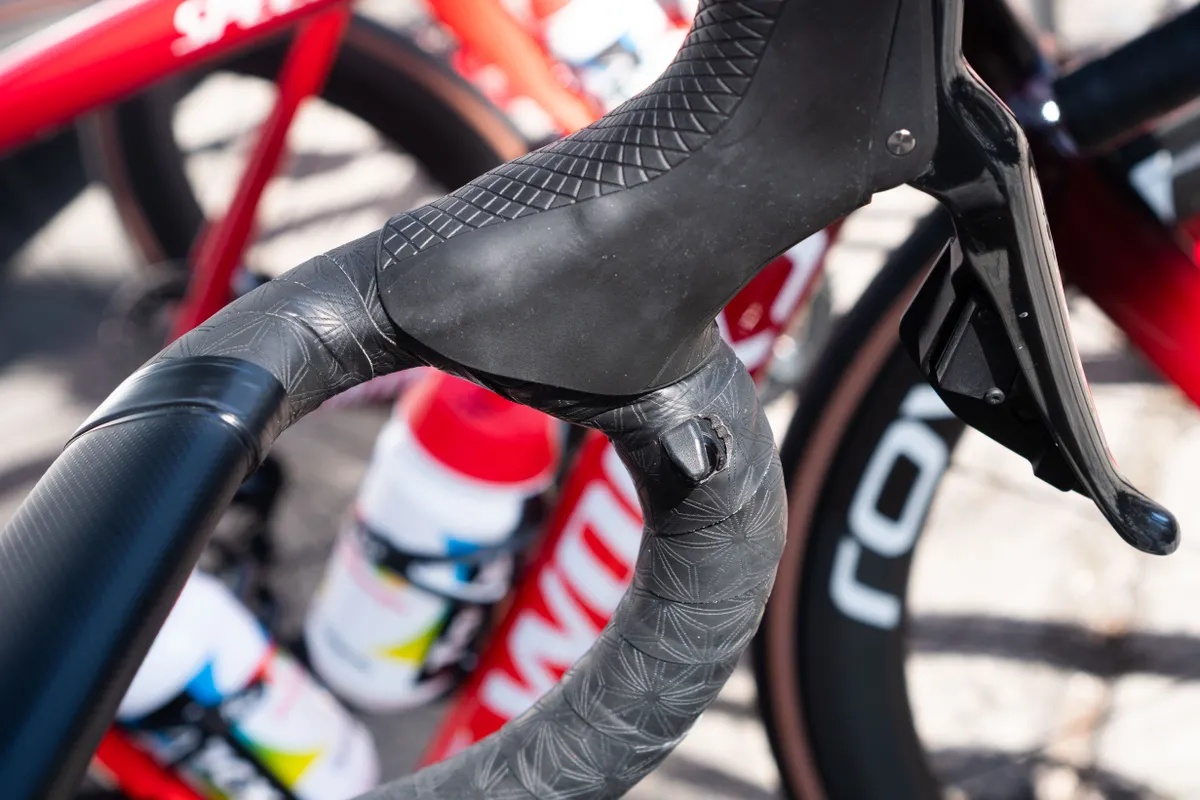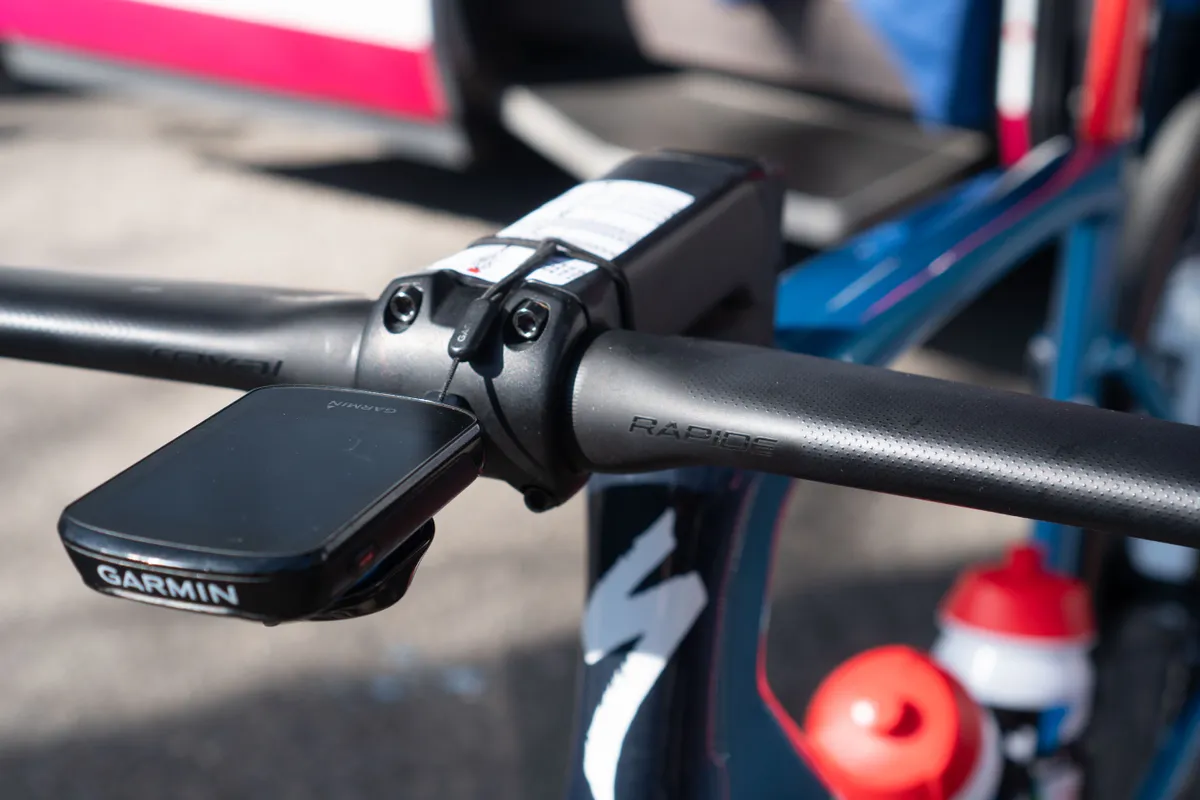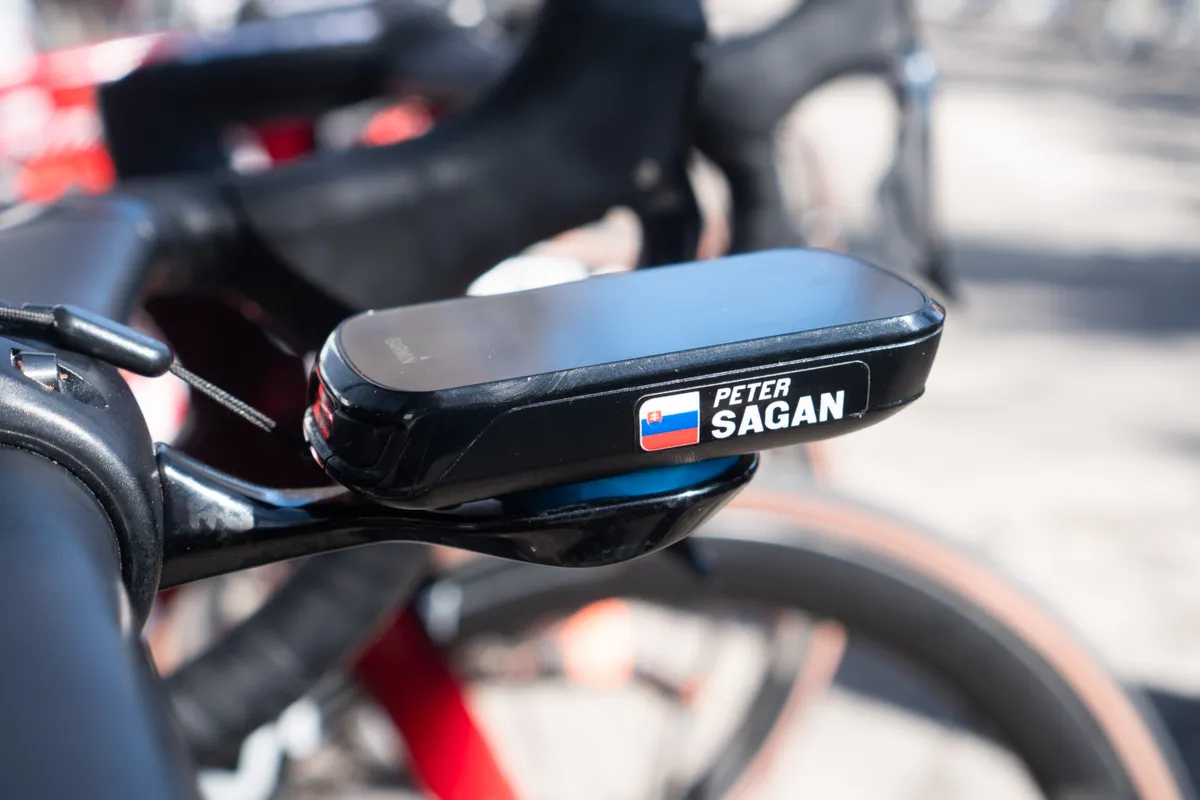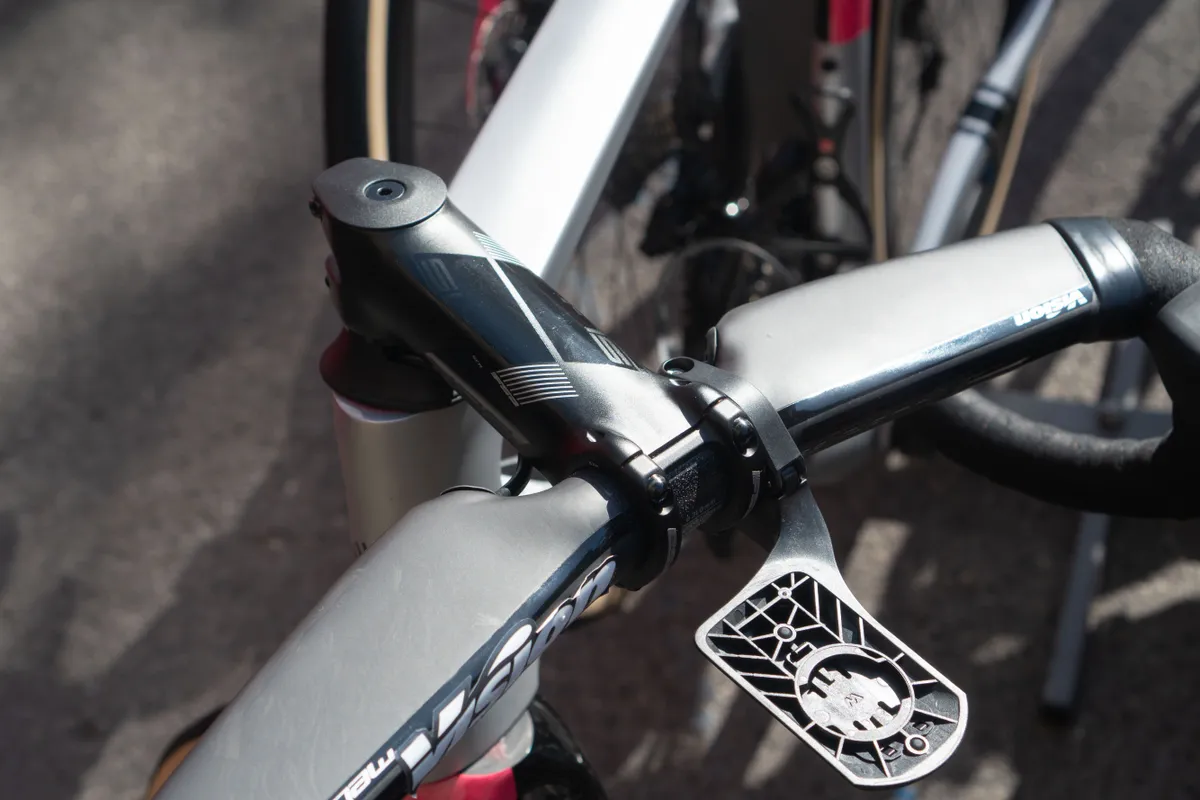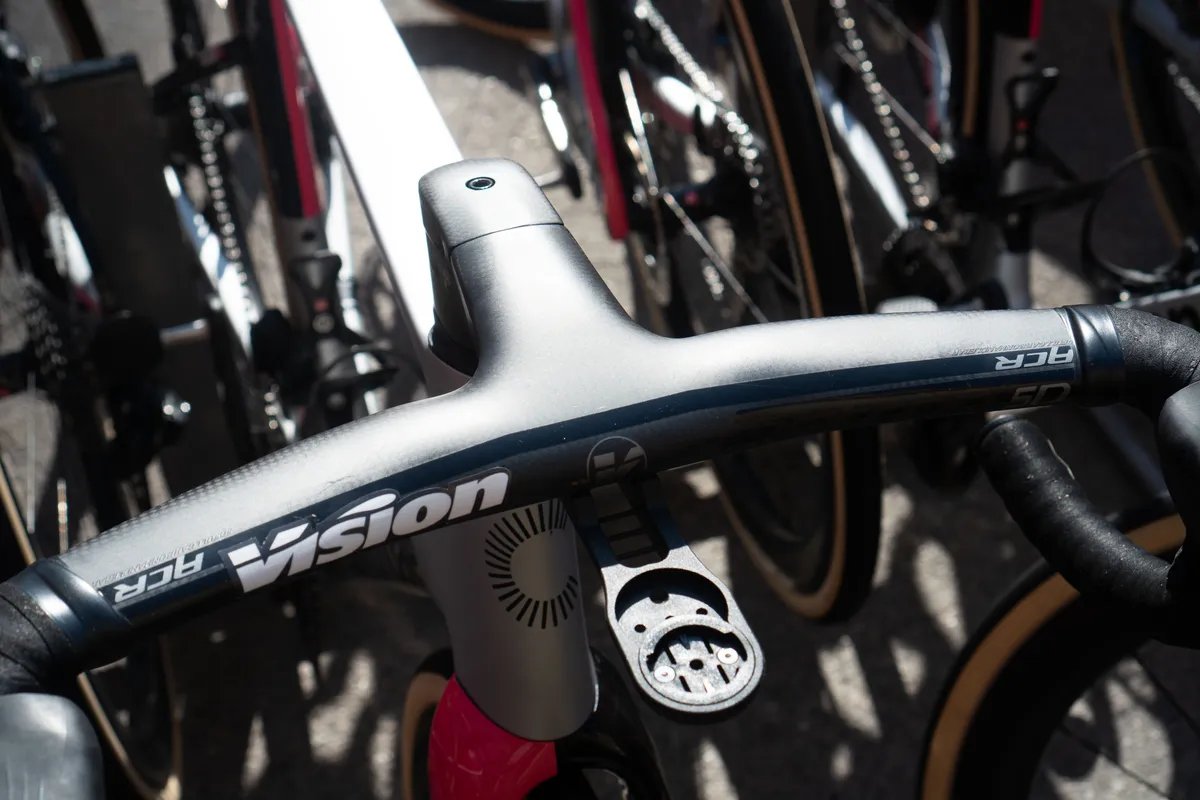Tyres are a hot topic at the top level of professional cycling, not least through the spring when riders face the cobbles of northern Europe and, on Saturday, the white gravel roads of Italy’s Strade Bianche.
We were at the partenza in Siena to prowl the start pen, roaming the team buses to take a closer look at the key tech choices ahead of Tom Pidcock’s solo victory.
Here’s what we spotted, including the near-ubiquitous adoption of tubeless tyres, the return of Matej Mohorič’s dropper post, a curious spec choice from Peter Sagan and bespoke nutrition plans.
Tubeless tyres dominate
Let’s start with tyres – a key talking point at a race such as Strade Bianche, with its 63km of gravel roads.

Here, the additional clearance of the latest race bikes comes to the fore, with 28c and 30c tyres specced across the board.
Perhaps unsurprisingly, given the rise of tubeless tyres in the pro peloton, and particularly in the Classics, tubeless also dominated in Italy.
However, Greg van Avermaet’s AG2R Citroën team was a notable outlier, sticking to Pirelli’s P Zero Race Tub SL.
Another Pirelli-sponsored team, Trek-Segafredo, did go tubeless with the P Zero Race TLR.
Elsewhere, Tom Pidcock used 30c Continental GP 5000 S TR tubeless tyres, the go-to tyre of choice across Continental’s sponsored teams.
Team Ineos opted for Shimano’s Dura-Ace C36 wheels over the rolling hills of Tuscany, while Movistar also kept things shallow with Zipp’s 303 Firecrest wheels, also mounted with Continental’s GP 5000 S TR.
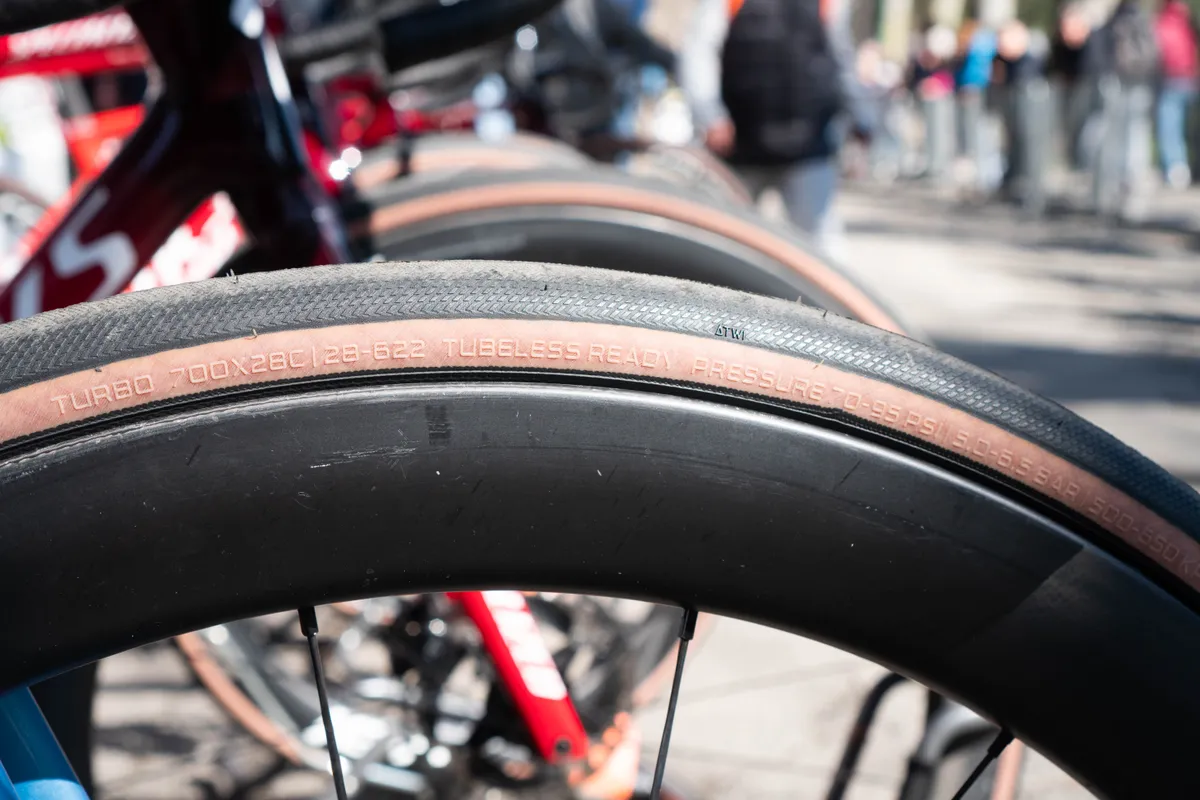
We also saw the Specialized S-Works Turbo 2BR tubeless tyre, now offered in a tan sidewall option, on the bikes of Soudal-QuickStep and TotalEnergies.
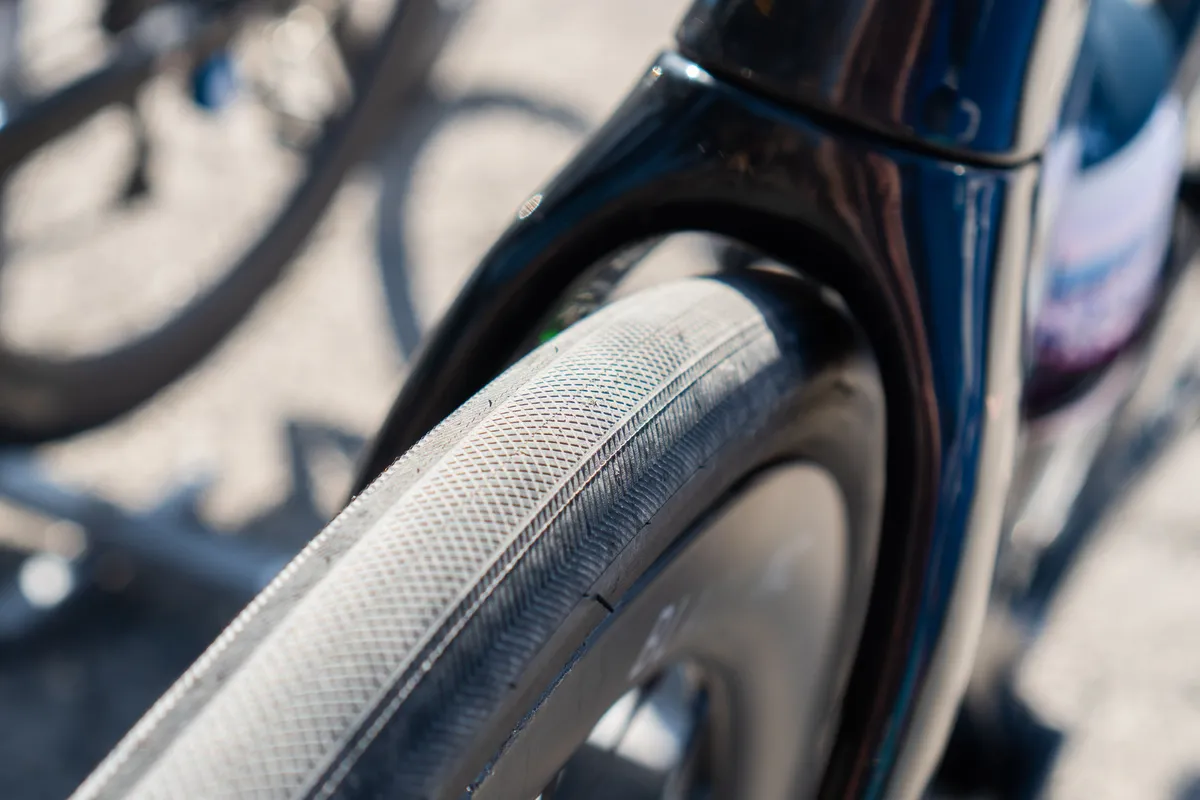
While the majority of teams and riders opted for race-focused tyres, as you'd expect, Israel-Premier Tech’s Simon Clarke ran Maxxis Velocita tyres – an 'endurance' option recommended for 'pavement/asphalt' and 'hard-packed dirt roads'. Strade Bianche, then?
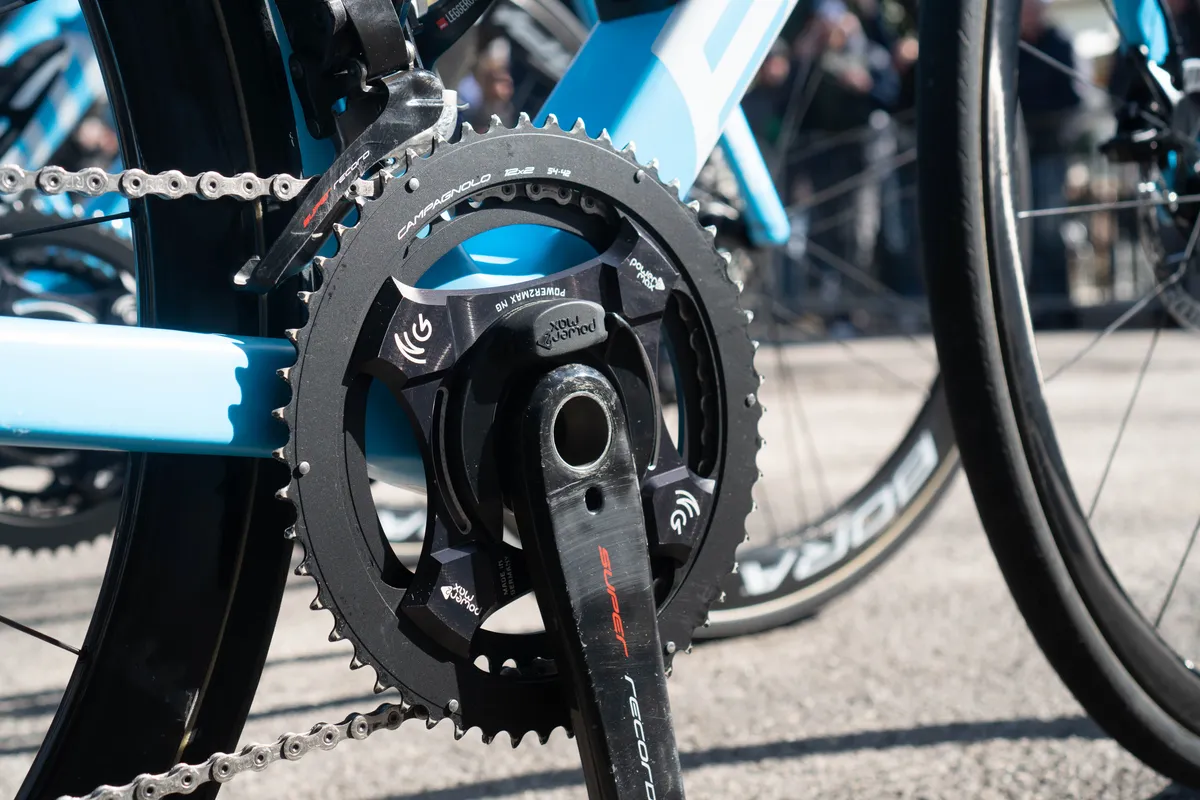
Vittoria Corsa Pro is ‘30 per cent faster’ than a tubular
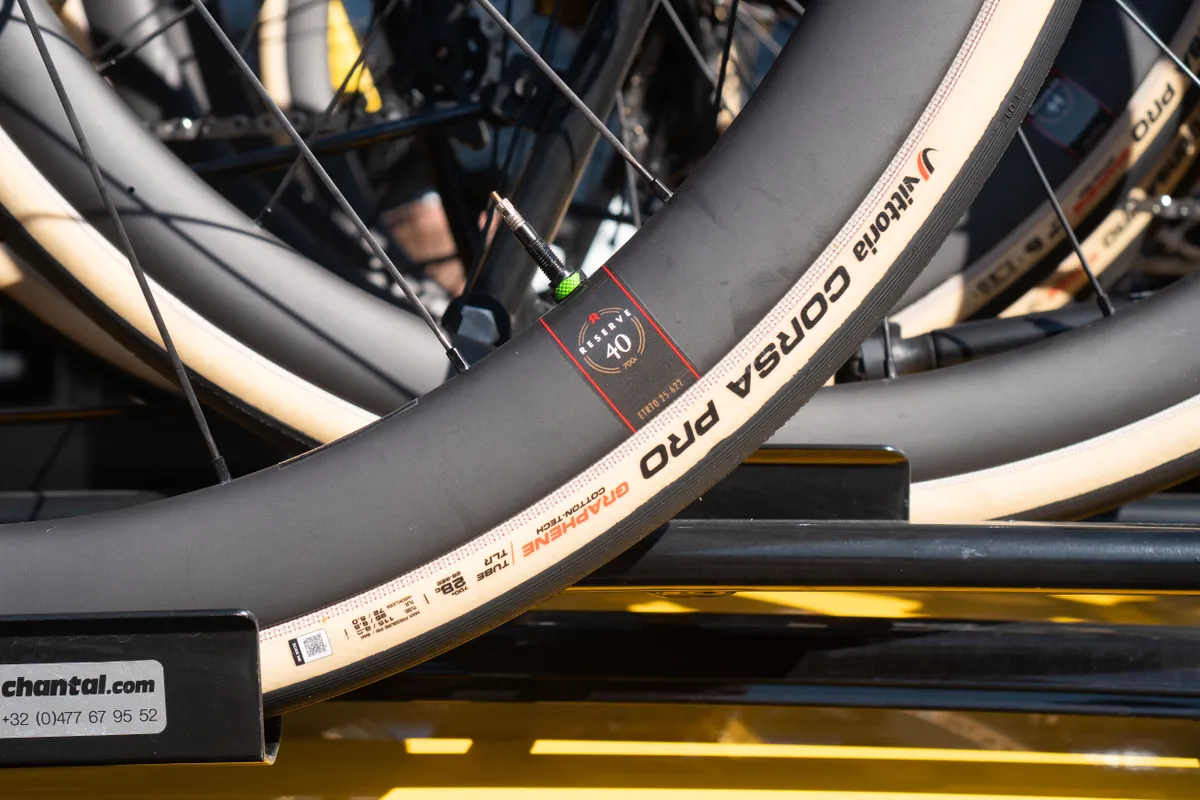
We spotted the new Vittoria Corsa Pro back in December, and the as-yet-unreleased tubeless tyre was a popular choice at Strade Bianche.
It's being used by teams including Jumbo-Visma, Lotto–Dstny and EF Education–EasyPost, with the latter also using foam tyre liners from Vittoria for run-flat protection.

While official details are yet to be confirmed, EF Education–EasyPost’s vice president of operations, Jonathan Breekveldt, told BikeRadar that “the coefficient of rolling resistance has been reduced again”.
Breekveldt said the EF team spent five days at Vittoria’s lab in Bergamo to test wheel and tyre combinations at the start of the season.

“We invested five days to figure out what the optimum pressure is per tyre model and by rider weight as well. We have three [weight] brackets that our mechanics use for pressure, but at the cobbled races and here the riders might reduce it a little bit.”
Breekveldt expects EF Education–EasyPost to stop using tubulars from the middle of the year, if not earlier. “Comparing the coefficient of rolling resistance, this setup is more than 30 per cent more efficient than a tubular," he said.
While a number of teams were on the new Corsa Pro, Mathieu van der Poel used Vittoria’s existing Corsa Control tubeless tyre; the same was true of the Astana Qazaqstan team.
Drop it like it’s hot – until it’s not
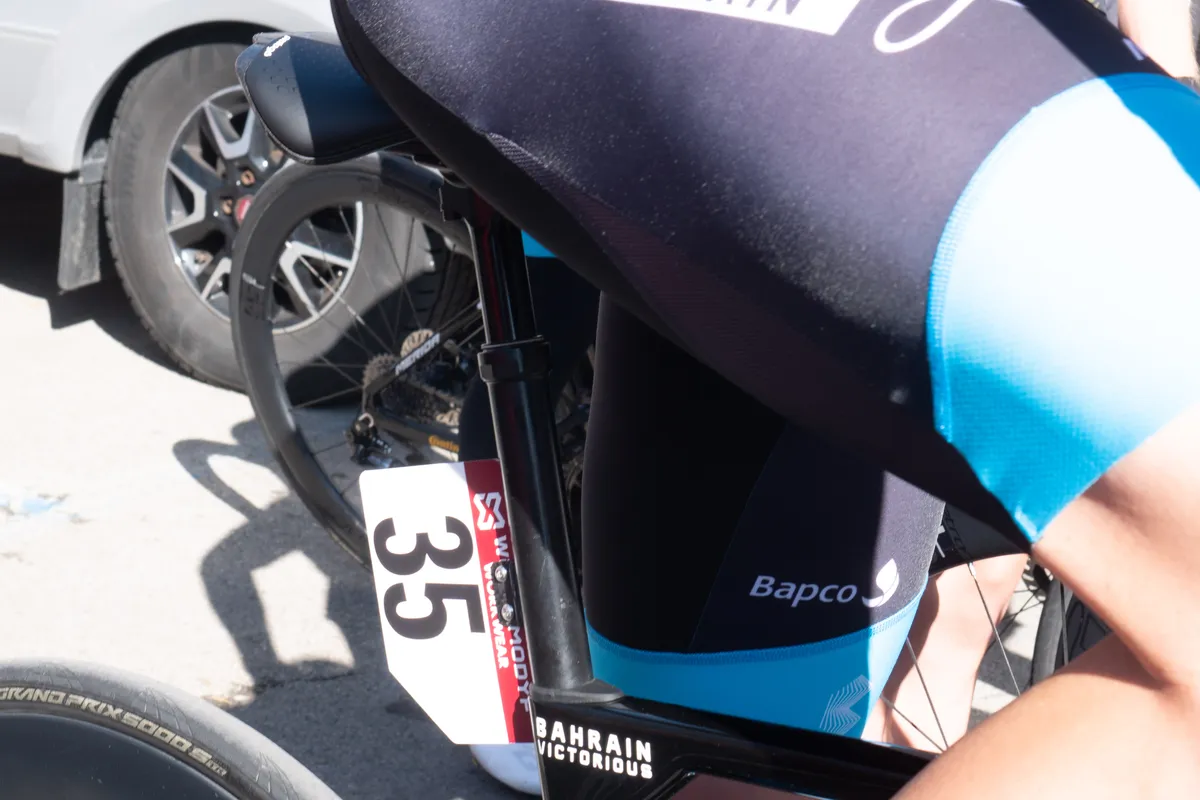
Matej Mohorič’s dropper post is back.
Mohorič made headlines last season by not only winning Milan-San Remo, but by using a dropper post to launch his daredevil attack on the descent of the Poggio.

We spotted the Slovenian’s Merida Scultura equipped with a dropper as the team rolled out of the start in Siena. However, after a mechanical during the race, Mohorič swapped to his spare bike, a Merida Reacto, which is unable to accommodate a dropper post.
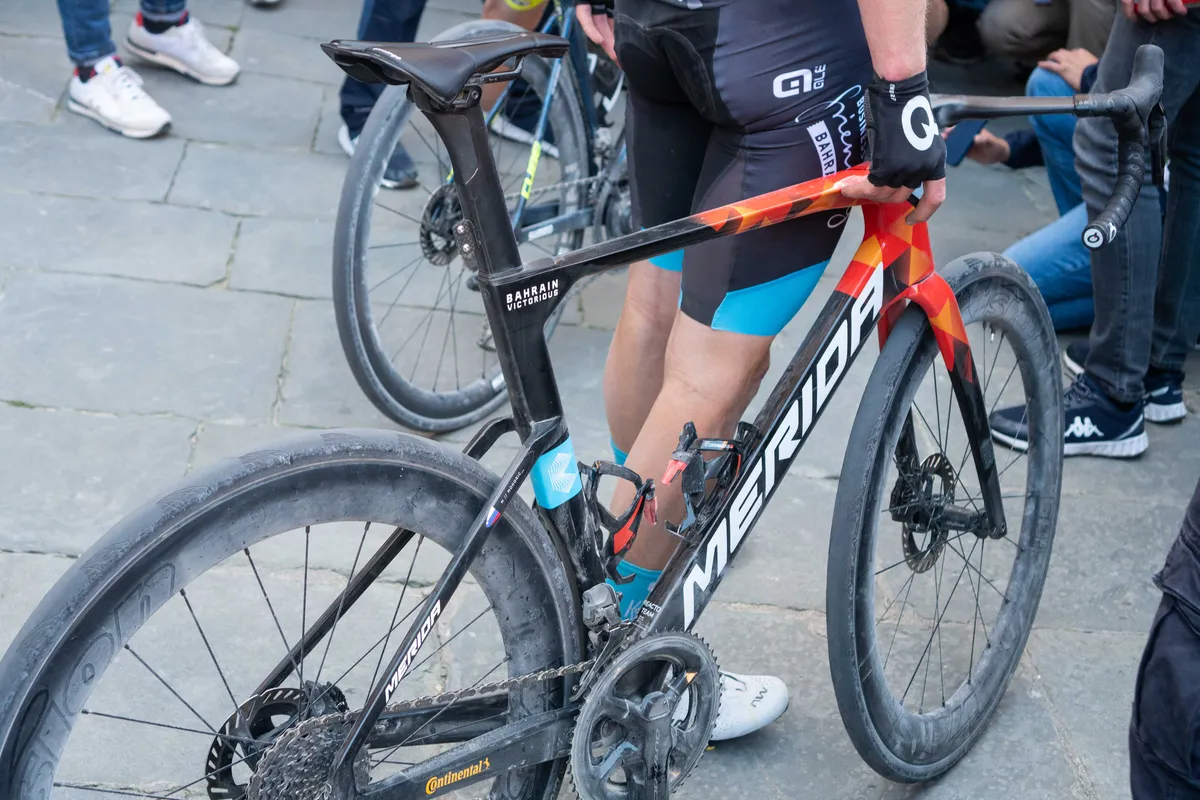
Indeed, while Mohorič’s team-mates were on the Reacto to start, owing to the Reacto’s aero-profiled seatpost, Mohorič needs to ride the Scultura – one of the few bikes in the pro peloton with a standard round post – in order to use a dropper.

Will we see Mohorič, who finished sixth at Strade Bianche, back on a dropper-equipped Scultura at Milan-San Remo? We reckon so…
Nutrition notes
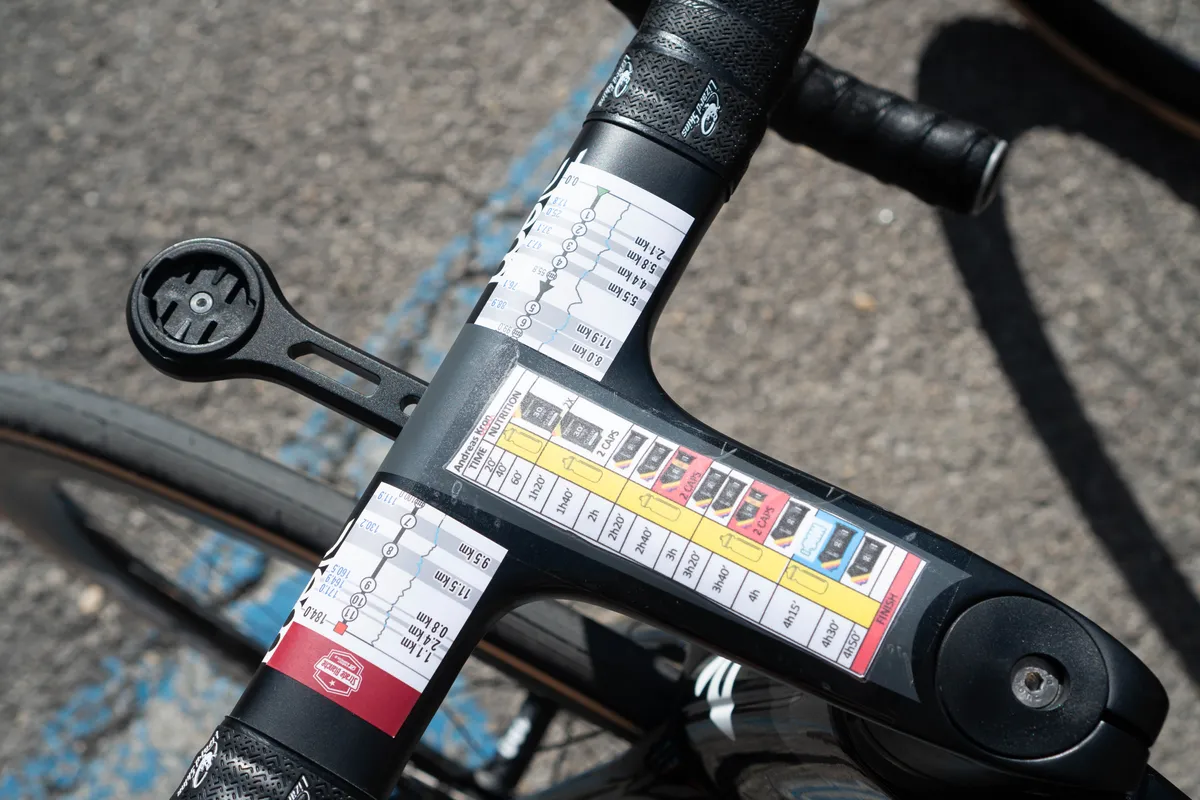
Nutrition know-how has improved dramatically among teams and riders in recent years, and that was evidenced in the bespoke nutrition strategies outlined on some bikes.
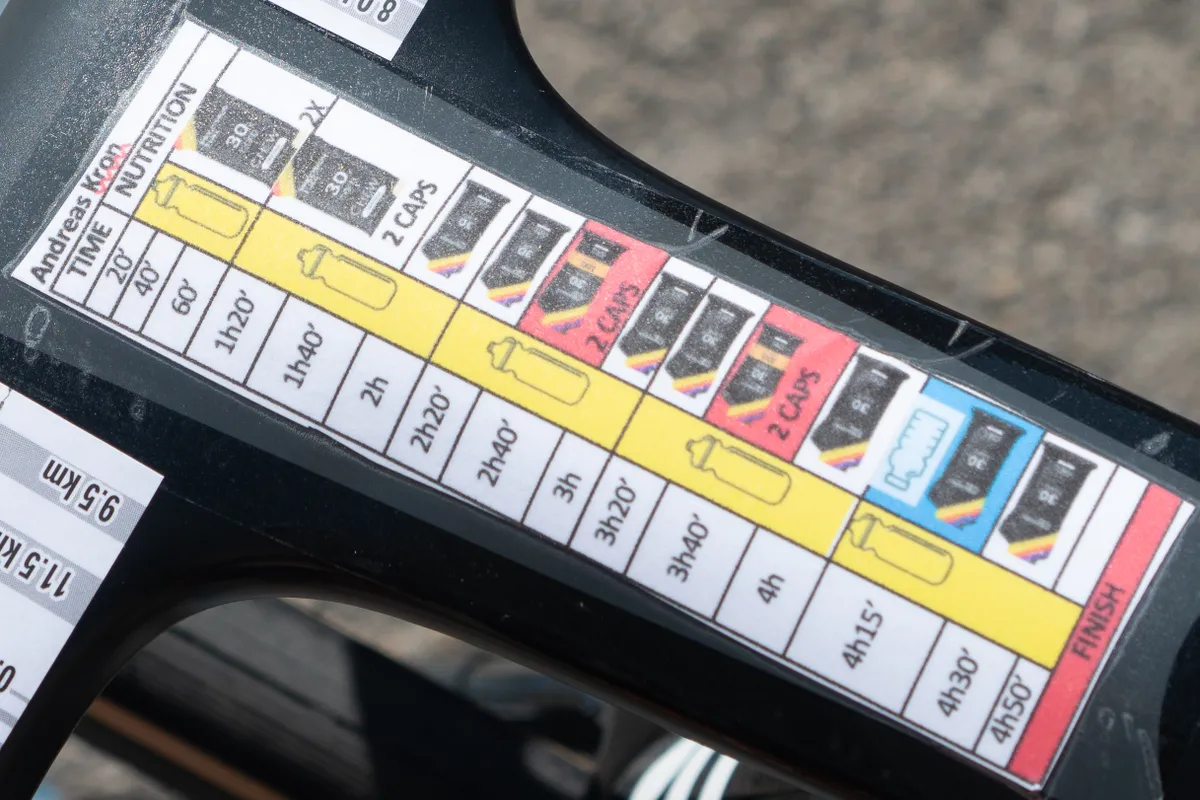
Take Andreas Kron of Lotto–Dstny, who had his food and drink requirements detailed on his stem, with specific timings. The Danish rider also had the race profile – and gravel sectors – on the handlebar.

Mathieu van der Poel was also among the riders to have his nutrition plan taped to the stem.
Once again, it features an outline of his planned hydration and food intake, in addition to the location of each gravel sector.

Ok, computer
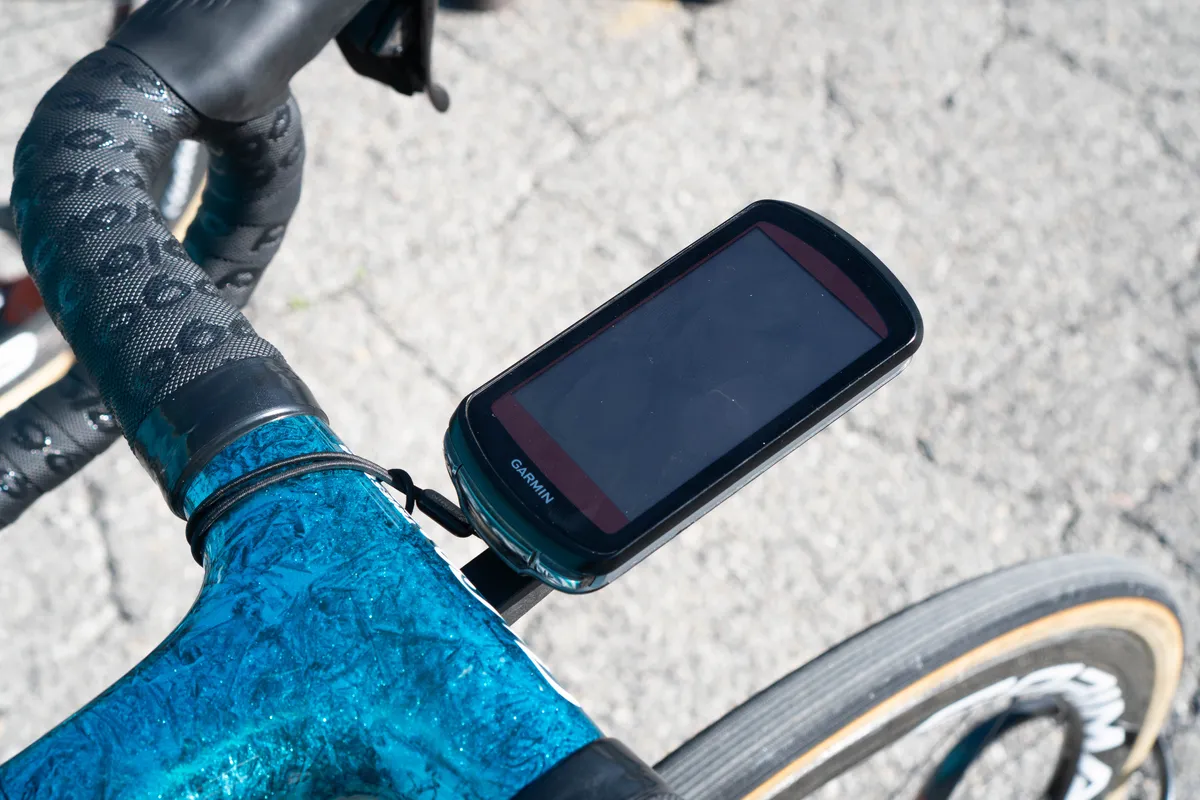
While computer sponsorship is common among top-tier pro teams, riders can typically choose their preferred model, providing the sponsor offers a range of devices.
For example, Astana’s Antonio Nibali used the Garmin Edge 1040, while his team-mate, Alexey Lutsenko, opted for the much smaller Garmin Edge 130 Plus.
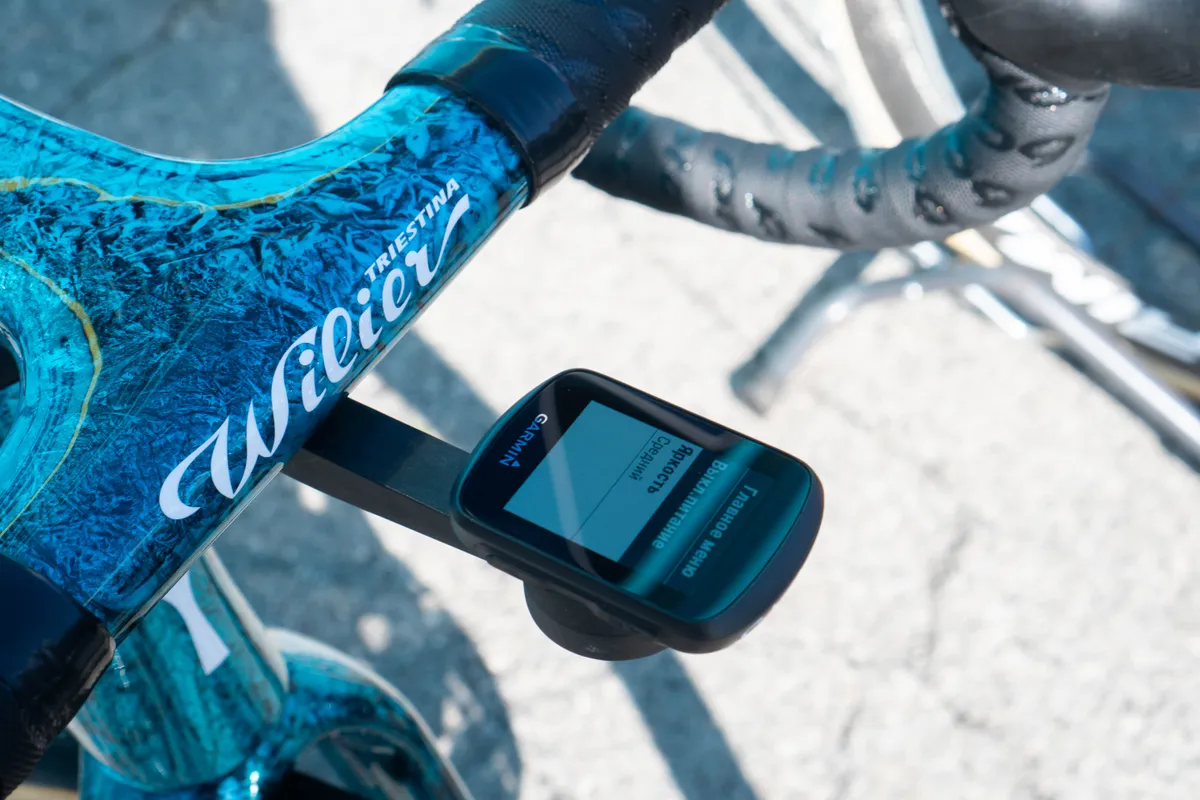
Some riders only want a device that shows the bare minimum, in terms of data. Others prefer a bigger screen to present more data, or to use the mapping functionality to get an early view on upcoming corners.
Wahoo-sponsored teams also give riders the choice between the bigger Elemnt Roam and the smaller (though still with mapping) Elemnt Bolt.
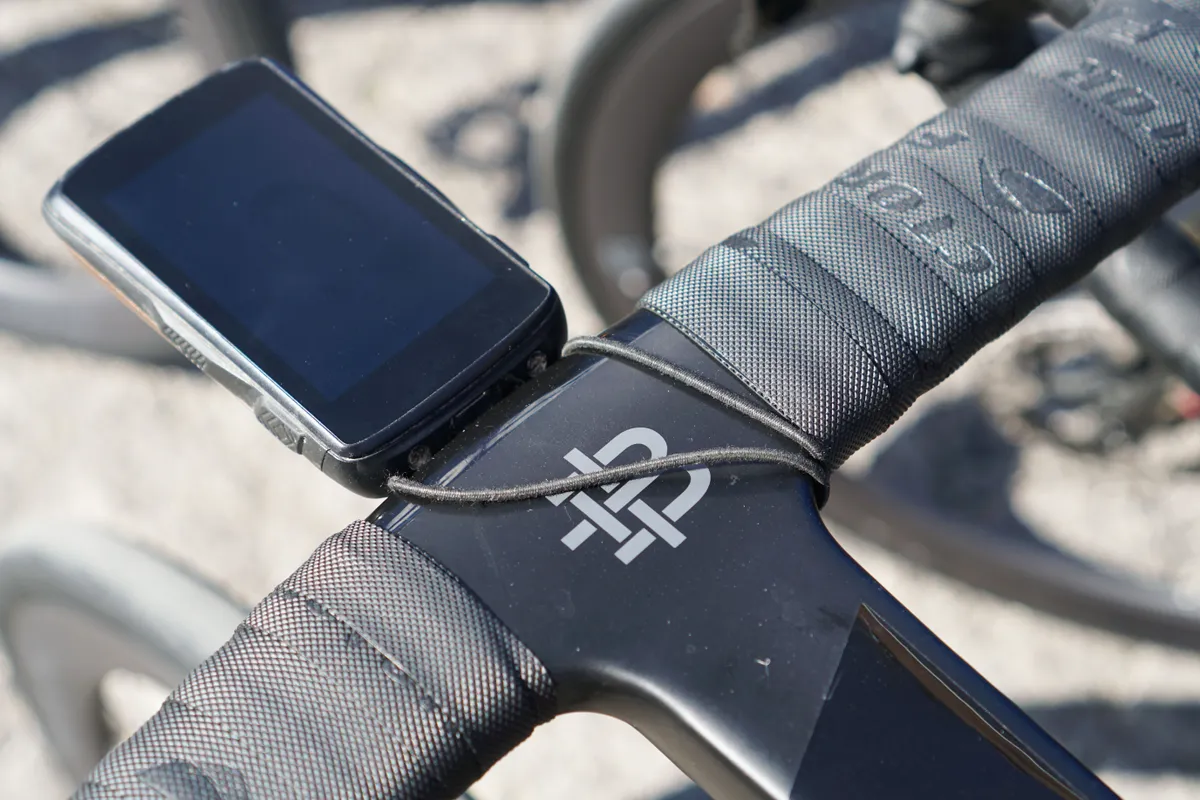
There’s no such luck for Israel Premier-Tech riders, though. The team is sponsored by Hammerhead, with the upstart only offering the Karoo 2 computer (even if it is very good).
One common trend across bikes at Strade Bianche was the use of a lanyard to keep the computer attached to the bike, in the event of it getting dislodged from the out-front mount on rough gravel sectors.
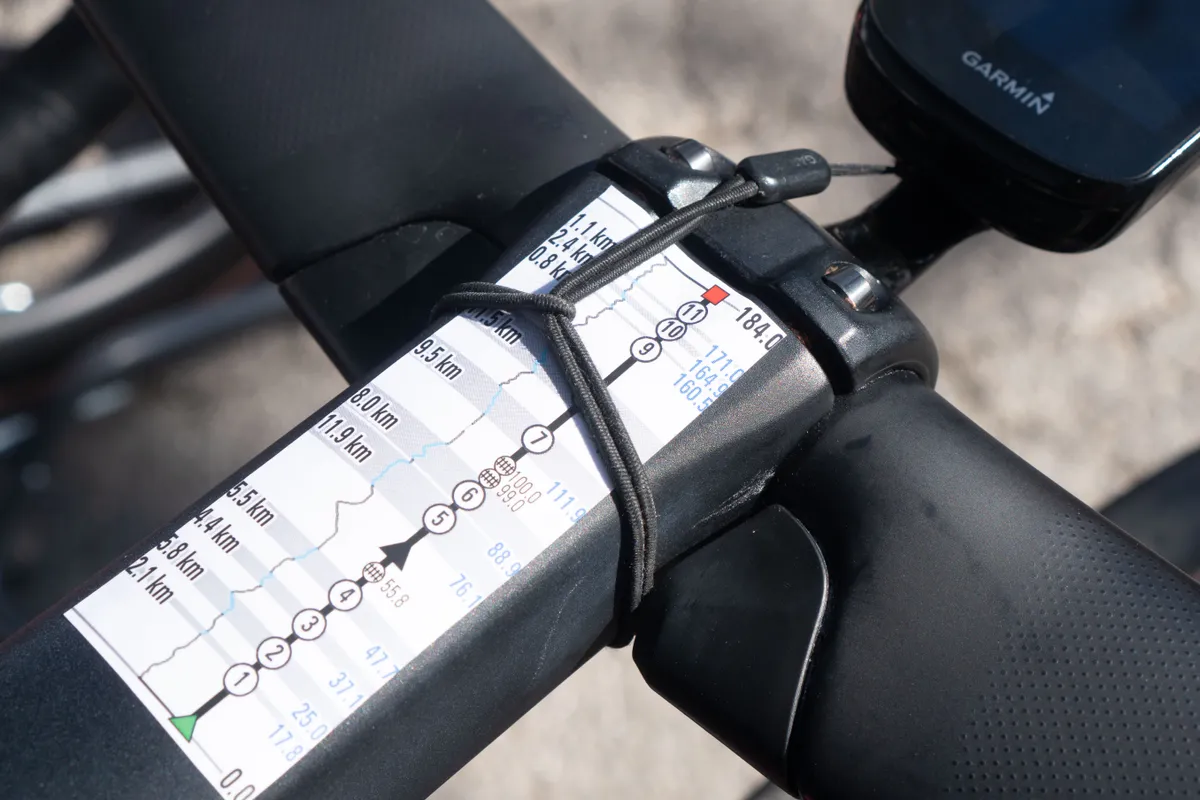
GRX Di2 for Peter Sagan

One of the more curious spec choices at Strade Bianche – and at the Opening Weekend, too – was Peter Sagan’s GRX Di2 derailleur.
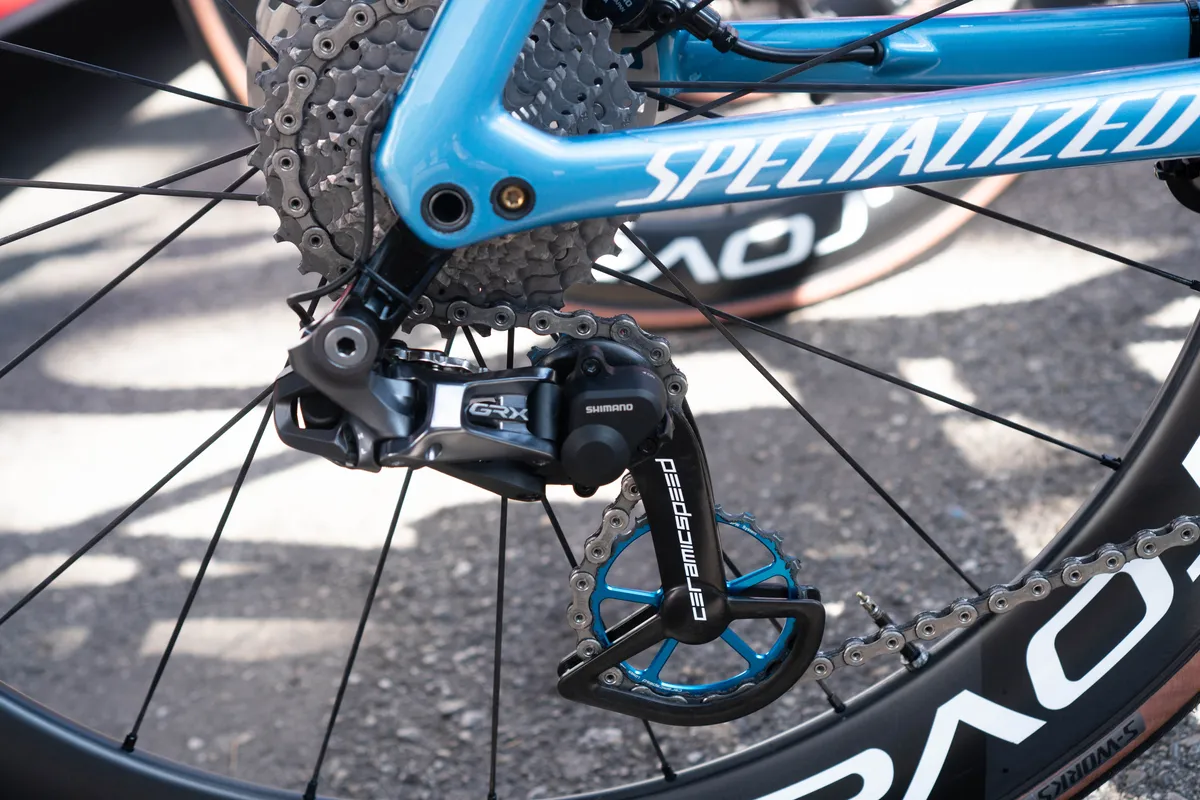
A TotalEnergies staff member told BikeRadar that Sagan prefers the improved chain retention offered by the GRX derailleur, which has a clutch mechanism (though it wasn’t turned on when we shot Sagan’s bike minutes before the race start).
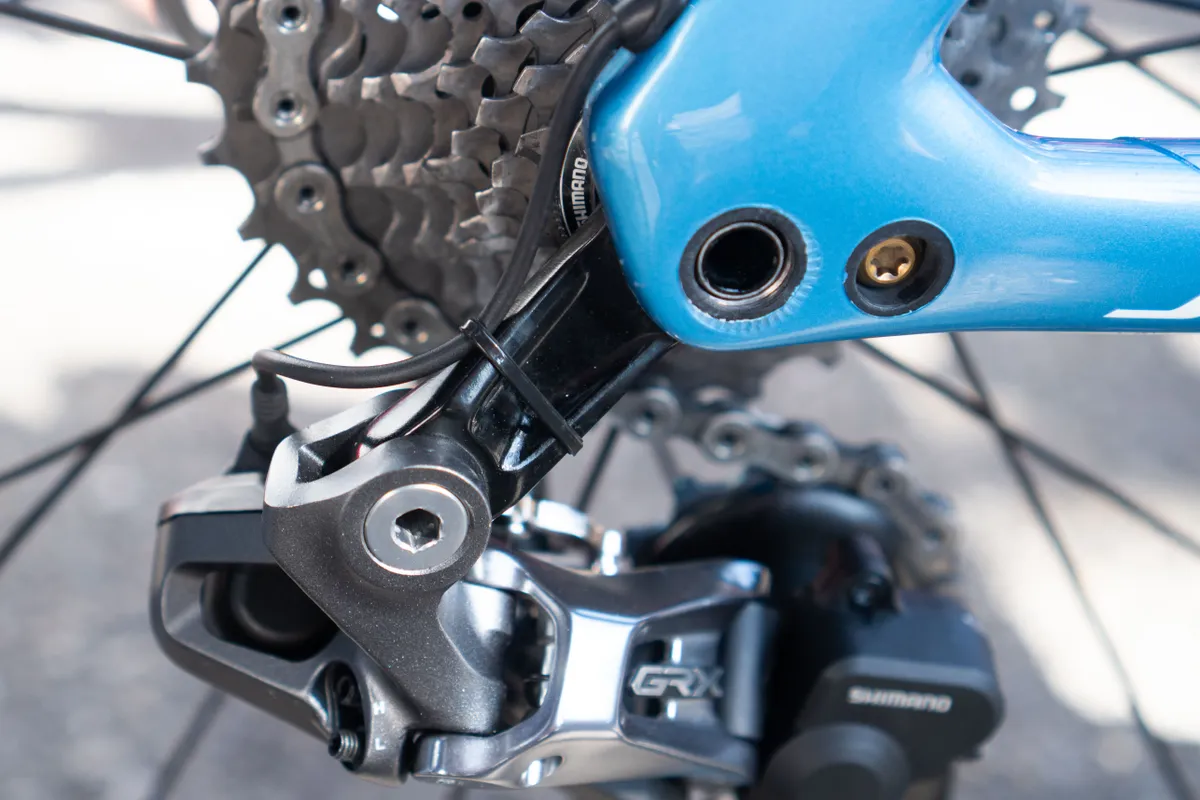
The 11-speed derailleur requires the use of 11-speed components across the rest of the groupset, so it’s Dura-Ace R9100 for the Slovak rider. Check out the oversized – and colour-matched – CeramicSpeed OSPW jockey wheels, too.
Like Alaphilippe, Sagan also used the new Specialized S-Works Turbo 2BR tubeless tyre with tan sidewalls, mounted to Roval Rapide CLX wheels.
Cannondale makes it official
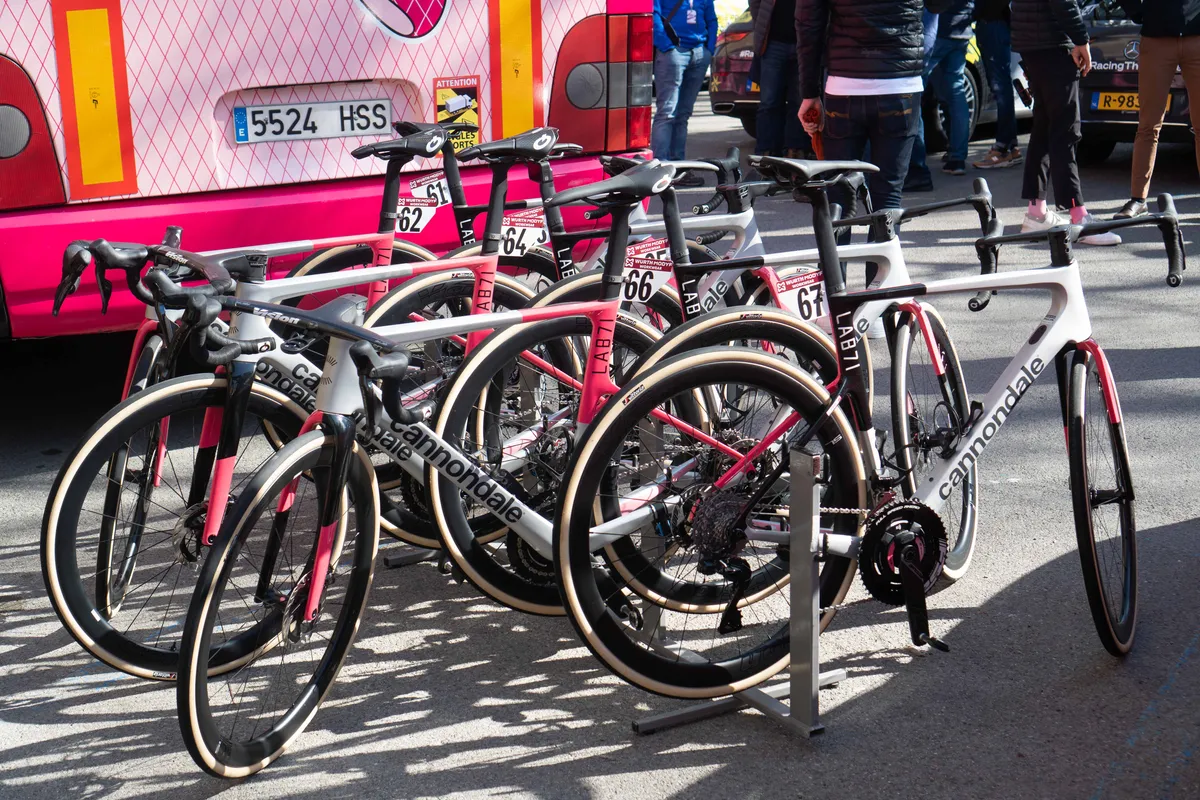
The new Cannondale SuperSix EVO turned out to be one of the most-teased bikes in recent years, with the EF Education–EasyPost team riding the bike towards the end of 2023, months ahead of its launch last week.
Updates to the fourth-generation model include a more aerodynamic frame shape and reduced weight – dropping to 770g for the flagship Lab71 frame used by the team.
There's also a simplified front-end that gives riders the option to run either an integrated cockpit or a more traditional two-piece setup.
On that note, six of the team's seven riders opted for a one-piece bar and stem at Strade Bianche, but Andrey Amador preferred the flexibility offered by pairing an FSA SCR aluminium stem with Vision's Metron carbon handlebar.
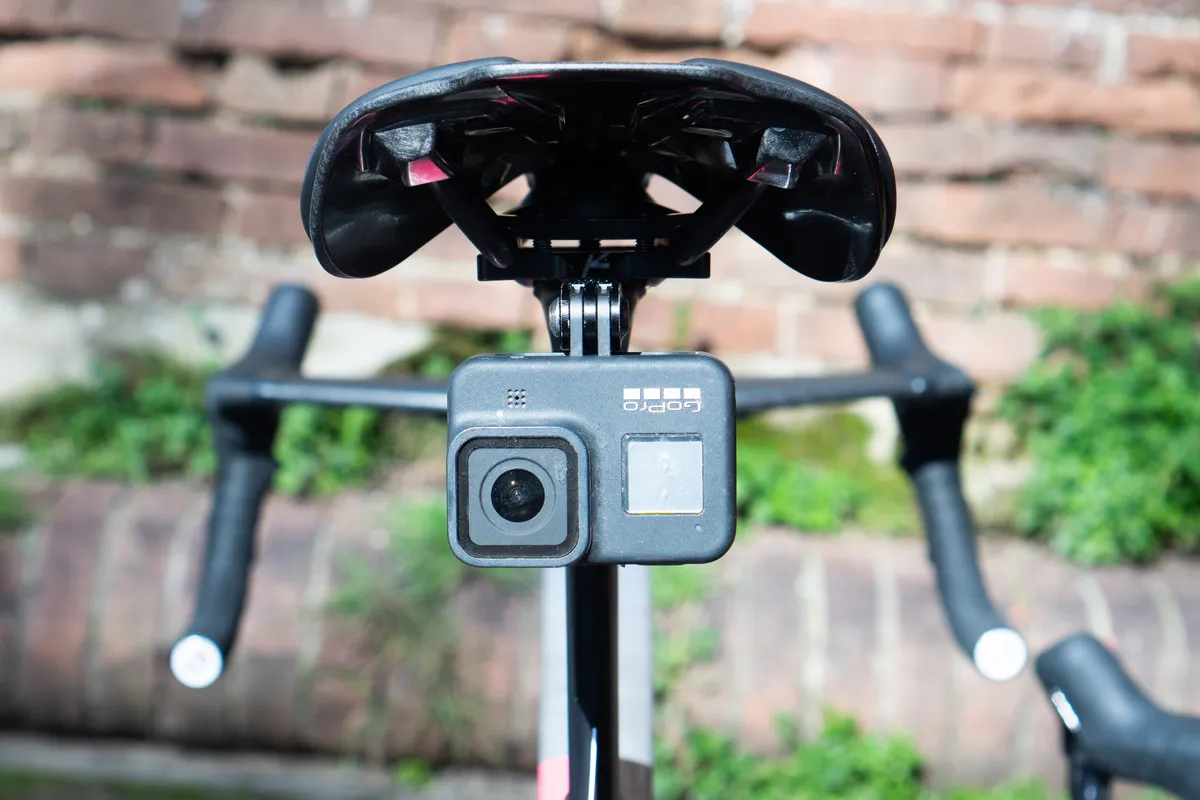
Pinot’s palmarès
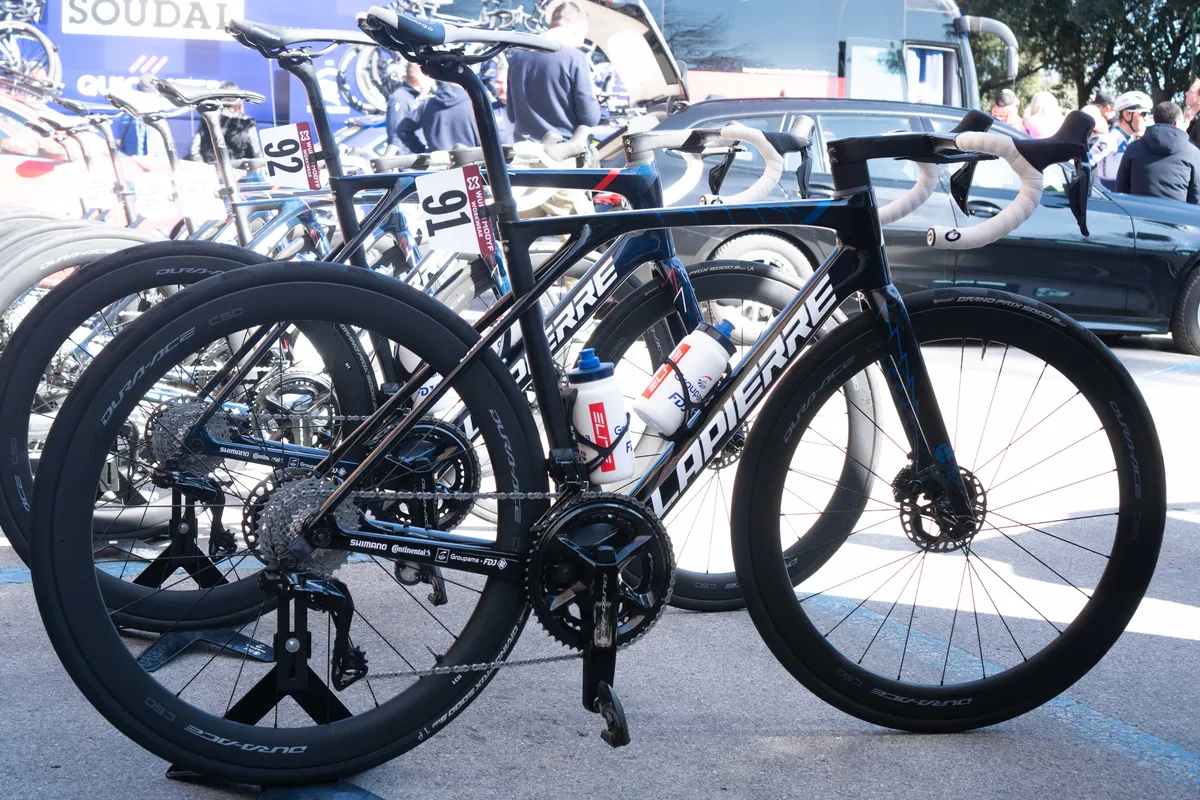
Thibaut Pinot’s Lapierre Xelius SL caught our eye – not because of the unique seatstay arrangement, but because of the Frenchman’s key wins, detailed on the top tube.

Those wins include Pinot’s six Grand Tour stages wins – three (2012, 2015, 2019) at the Tour de France, two (2018) at the Giro d'Italia and one (2017) at the Vuelta a España.

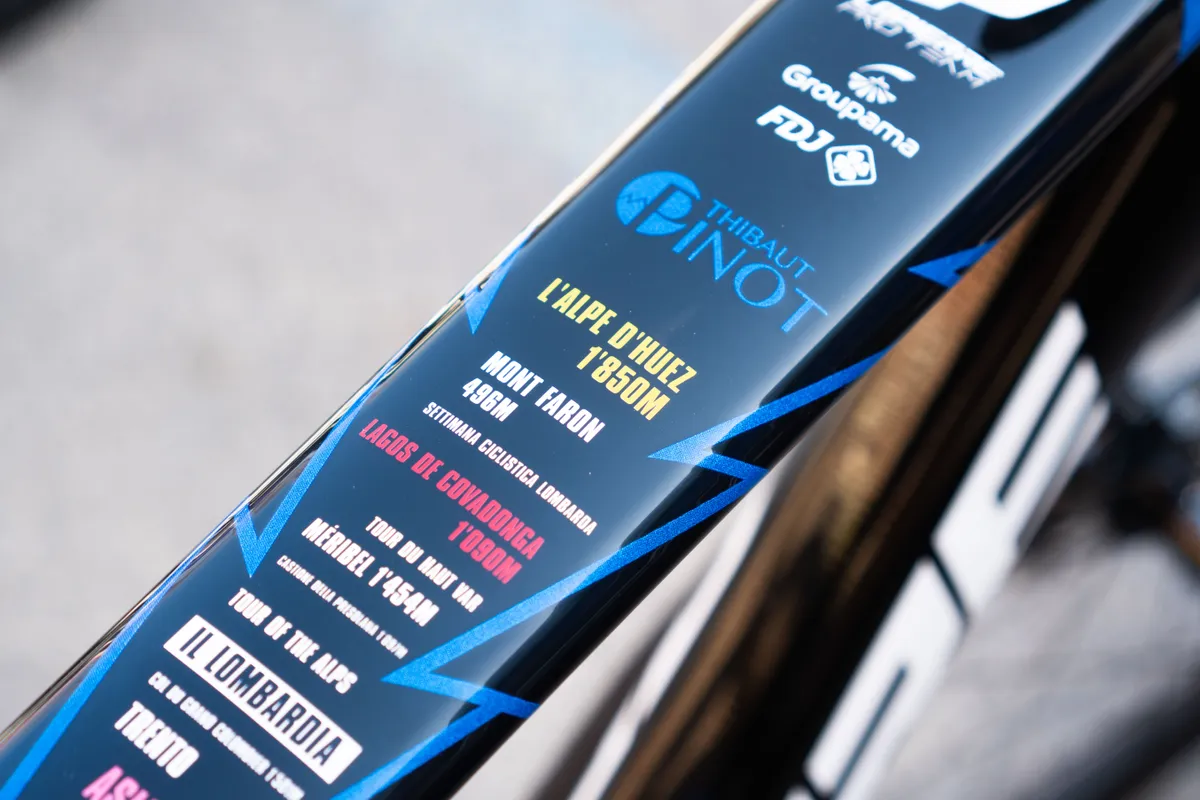
The pick of the bunch
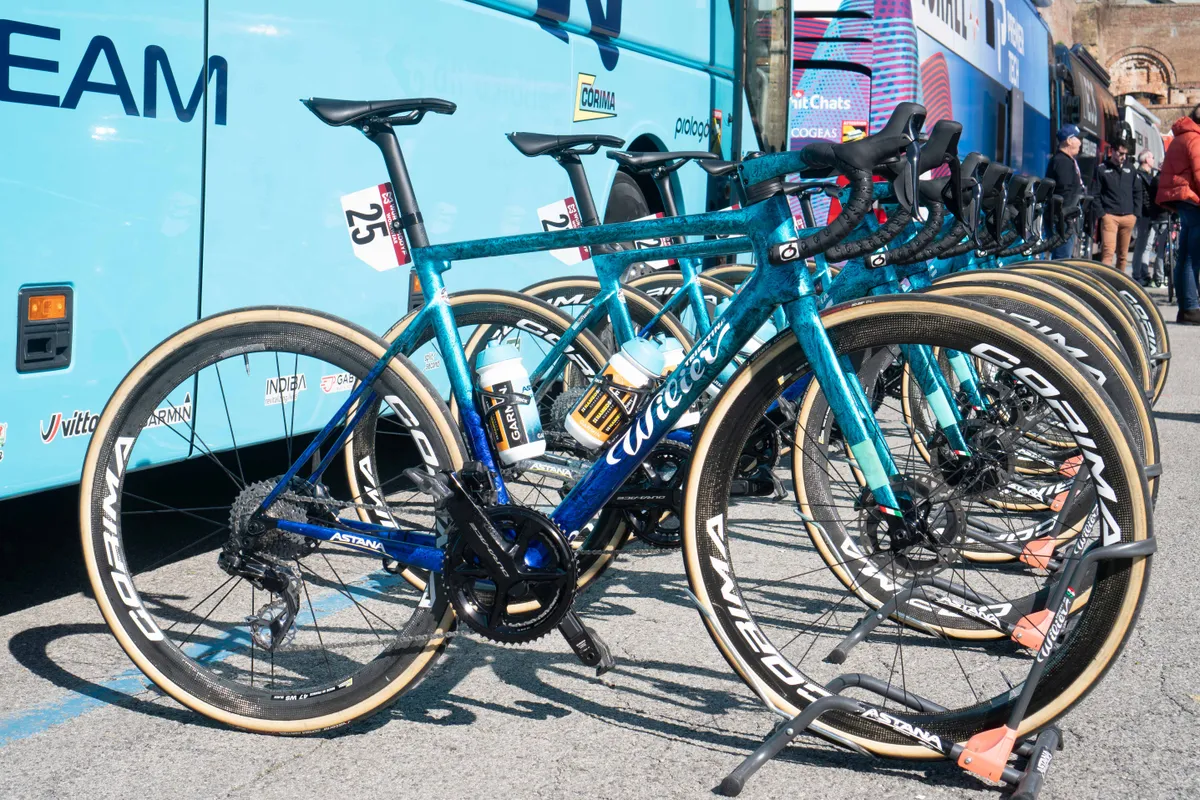
And finally, Astana Qazaqstan’s Wilier 0 SLR is surely the prettiest bike in the WorldTour peloton in 2023.
The marble-effect paintjob is stunning in the flesh.
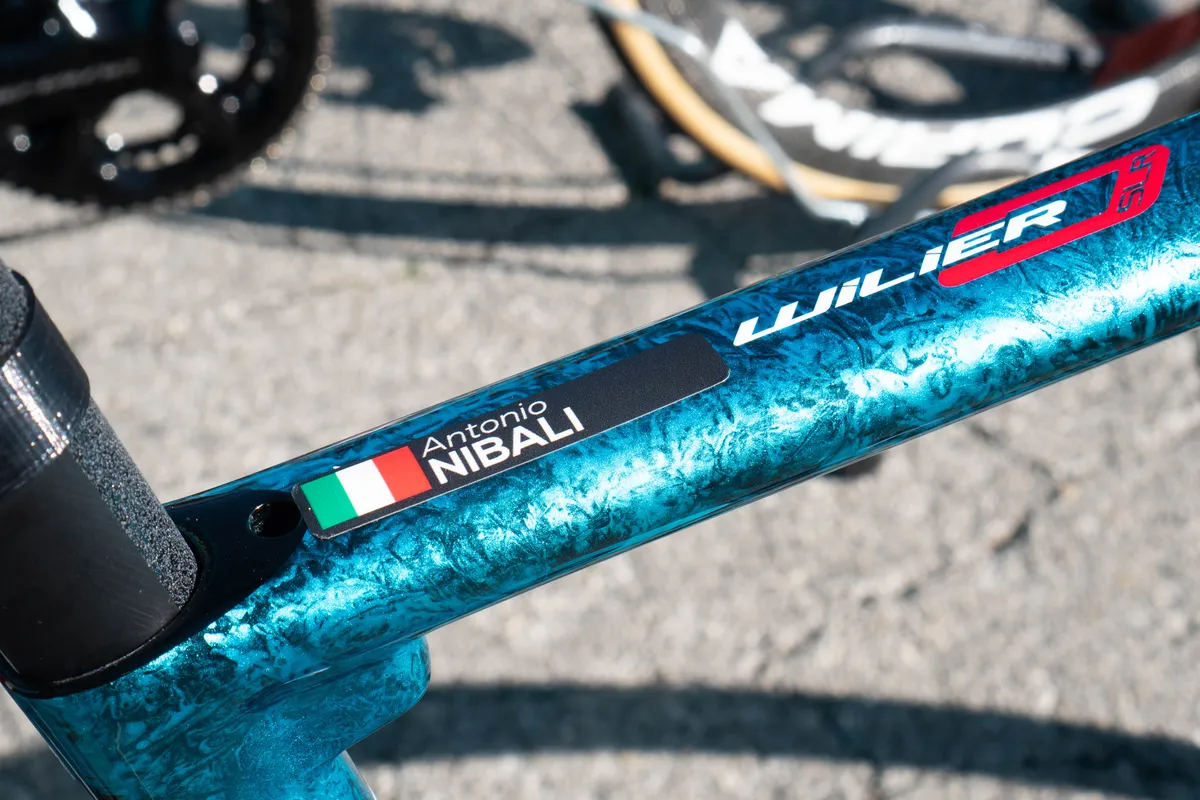
It’s described as a ‘chrome-plated graphite livery’ by Wilier, starting in the team’s trademark ‘azzurro’ before fading to a darker blue on the seatstays, seat tube and down tube.
The 0 SLR is Wilier’s lightweight bike, preferred by the likes of Antonio Nibali, while Mark Cavendish is riding the more aerodynamic Filante SLR.
